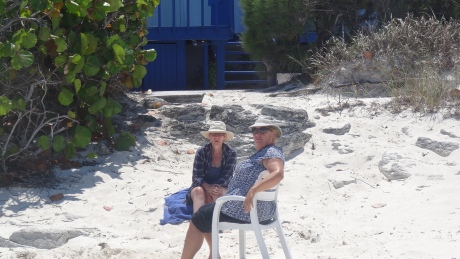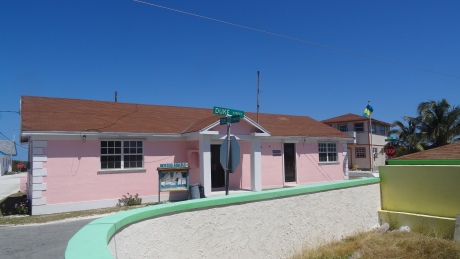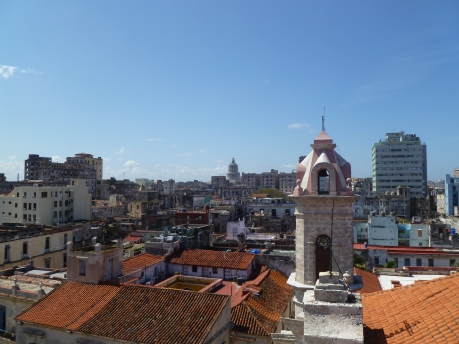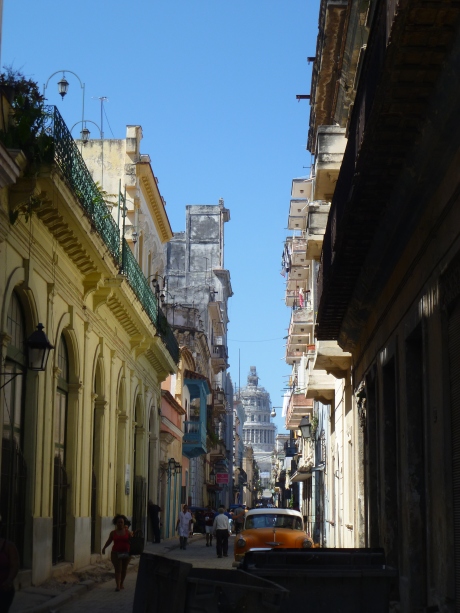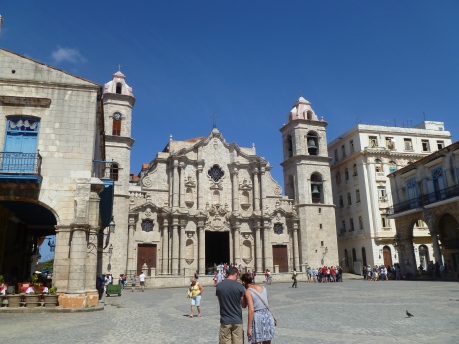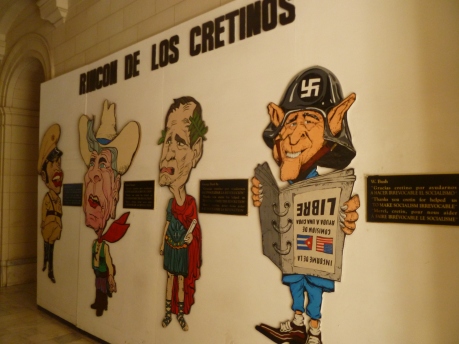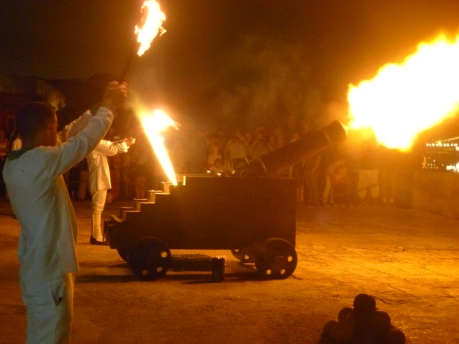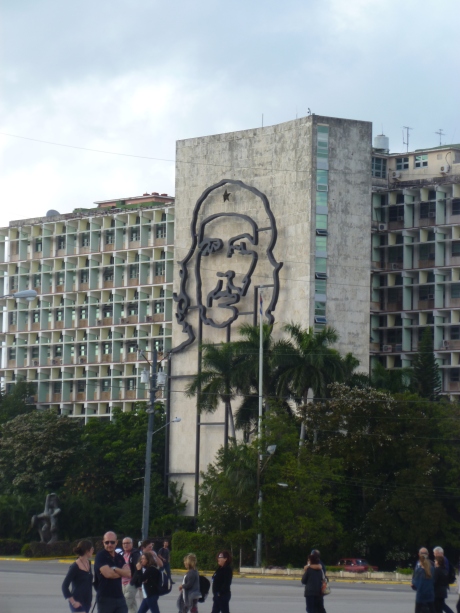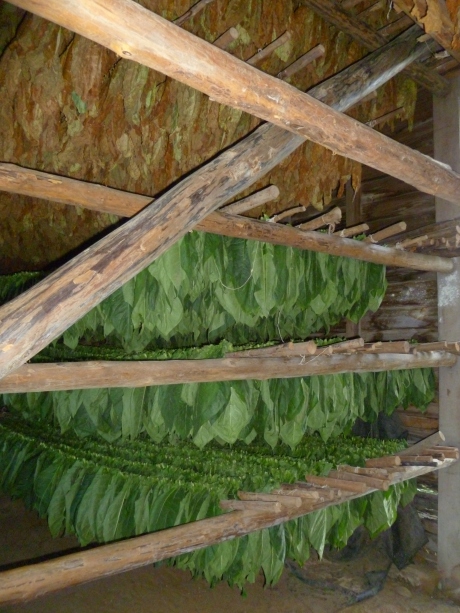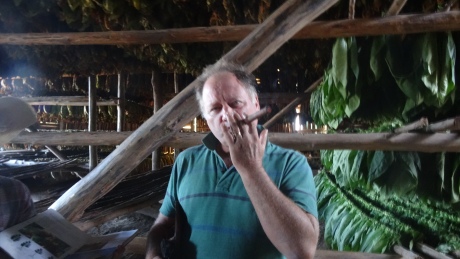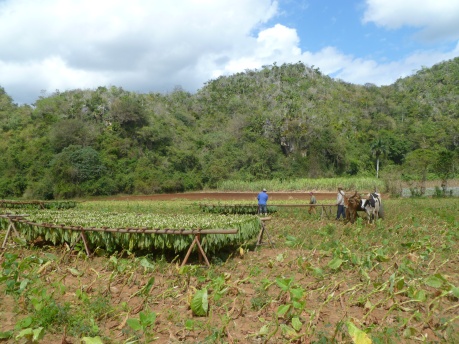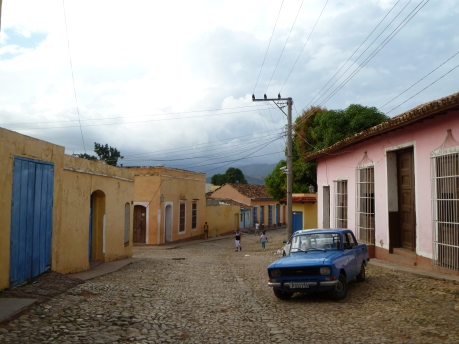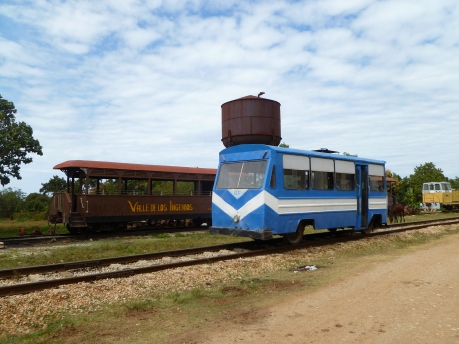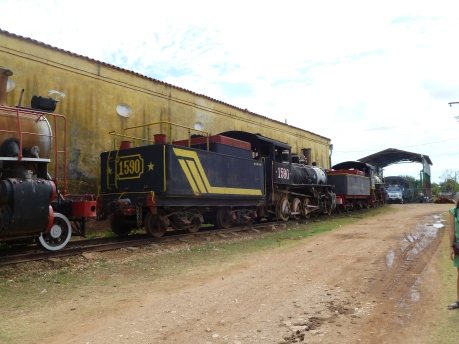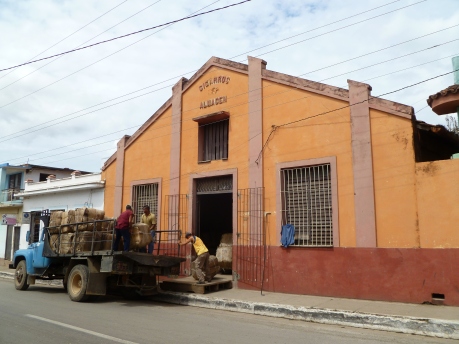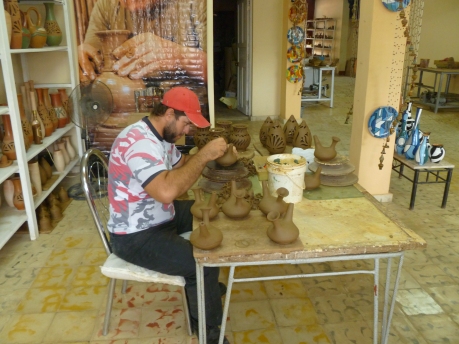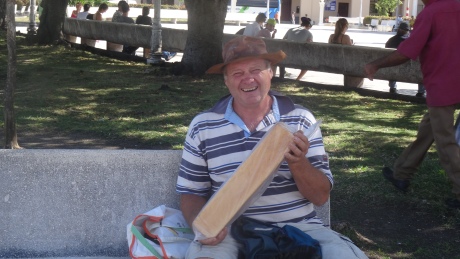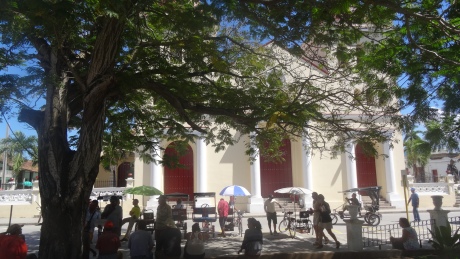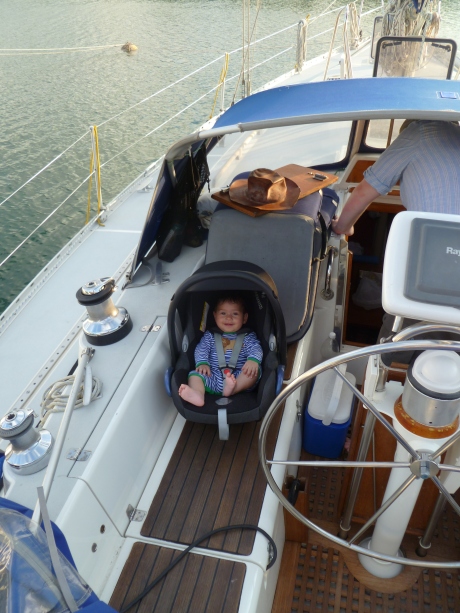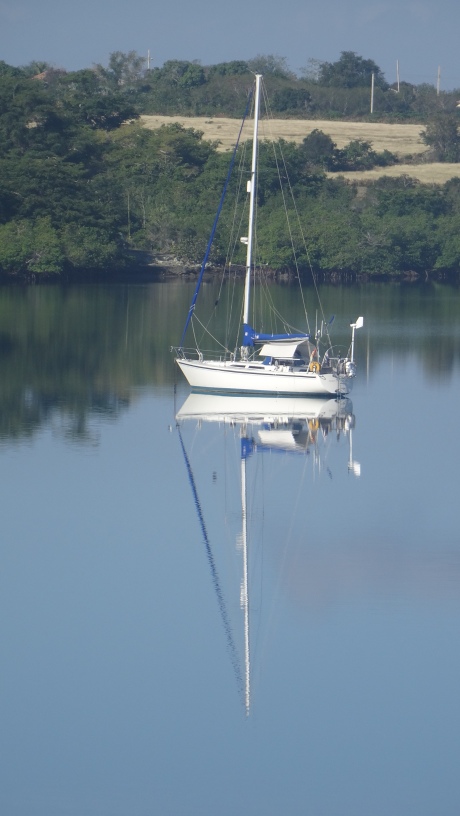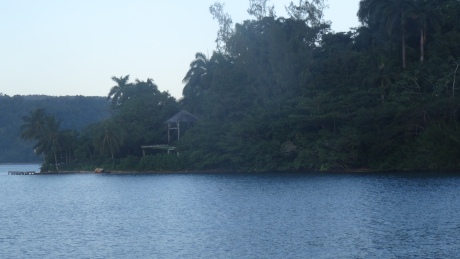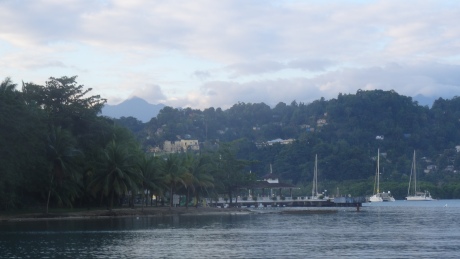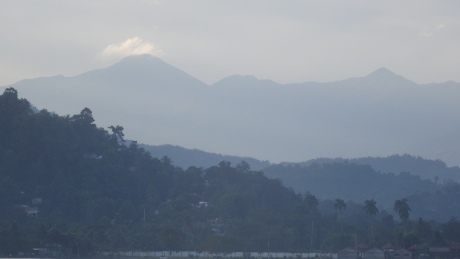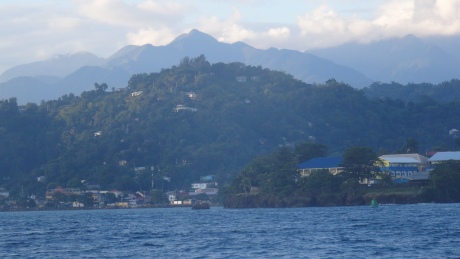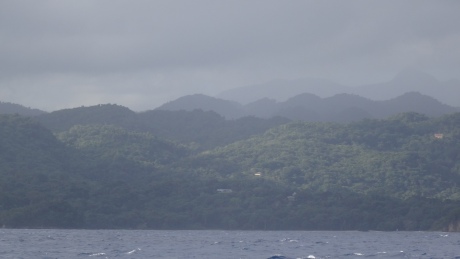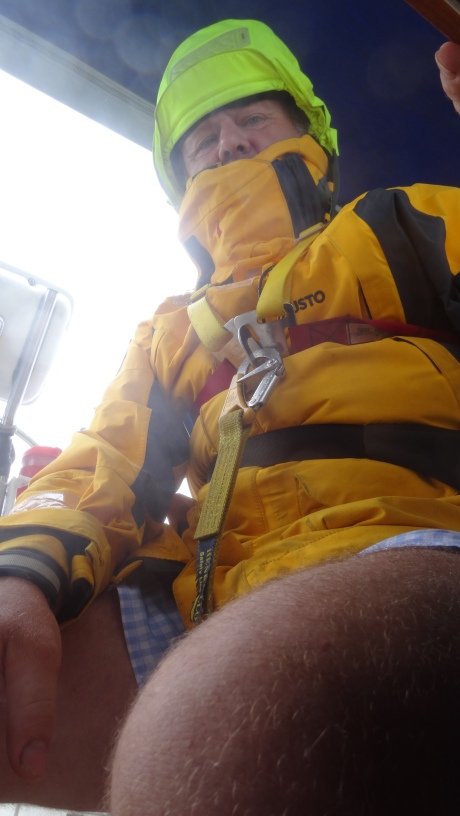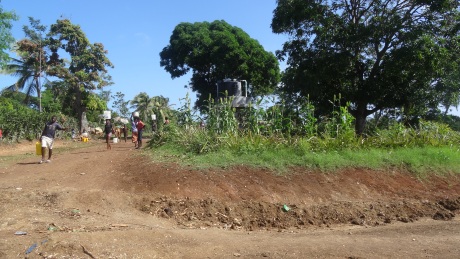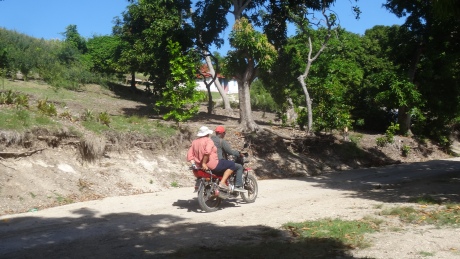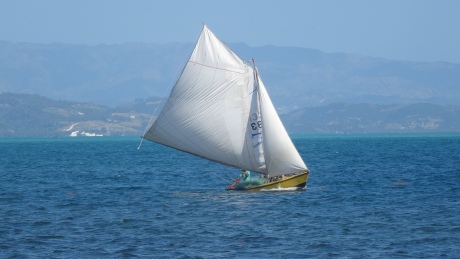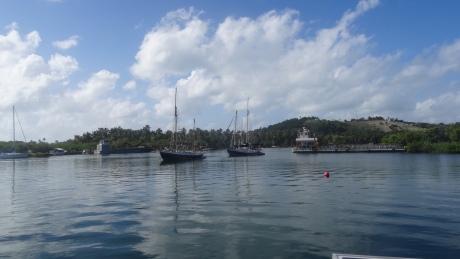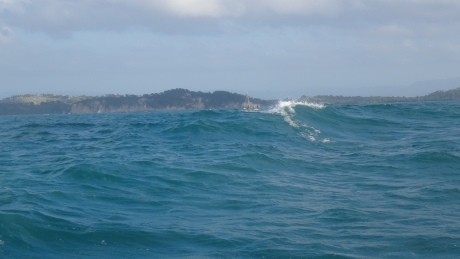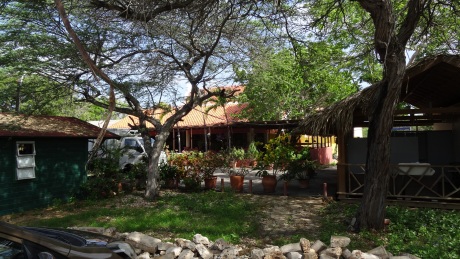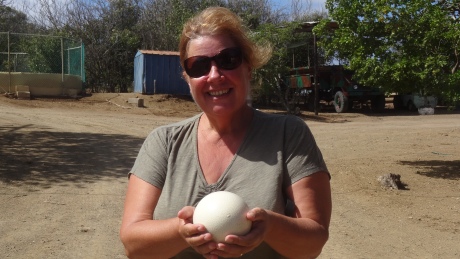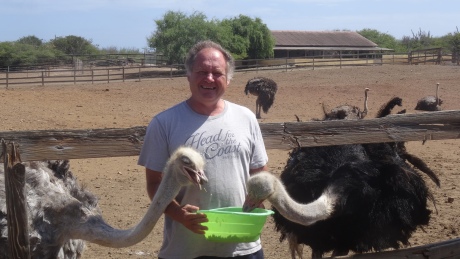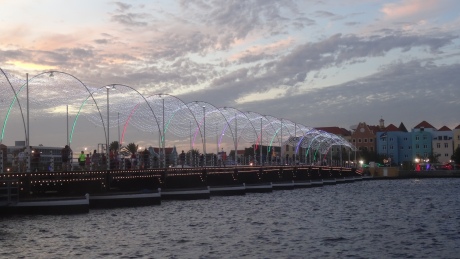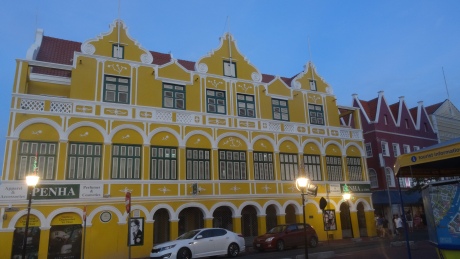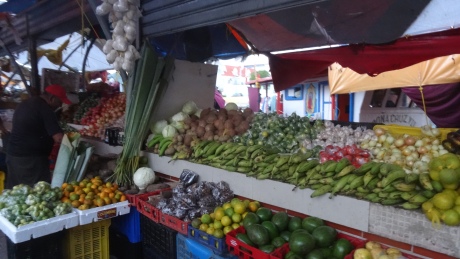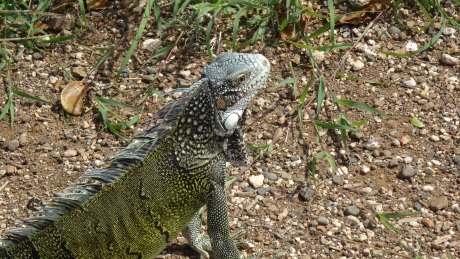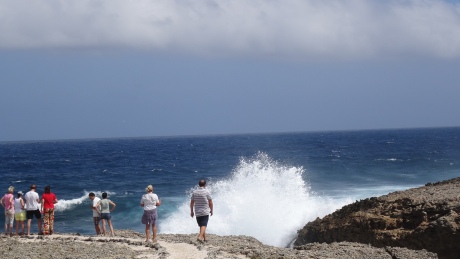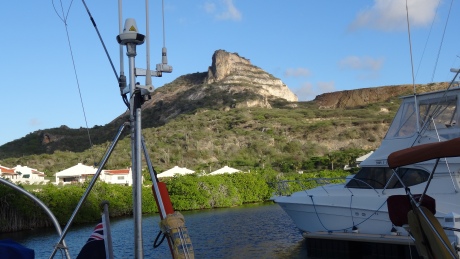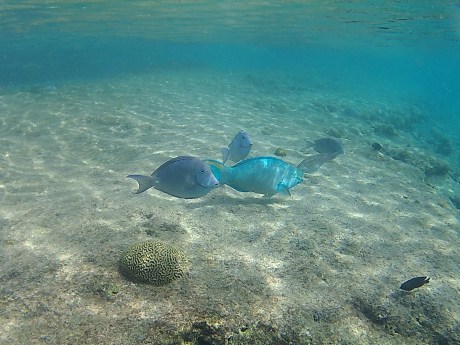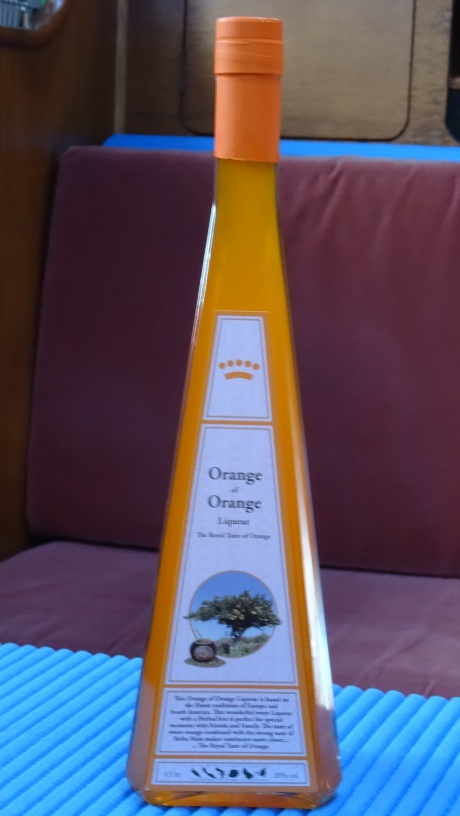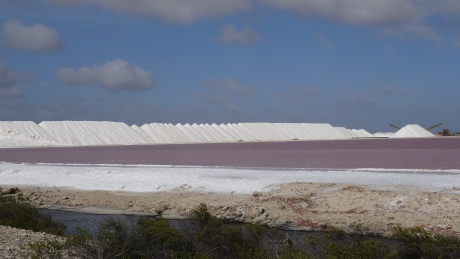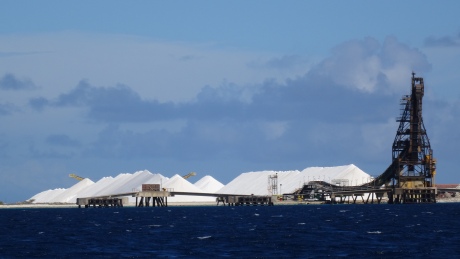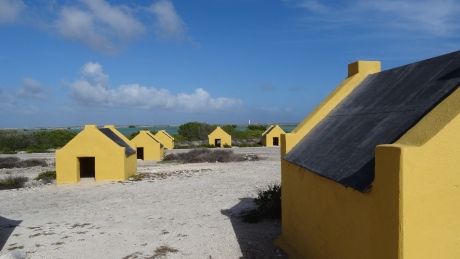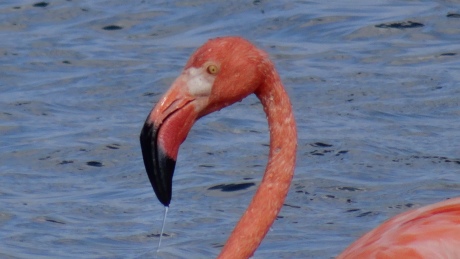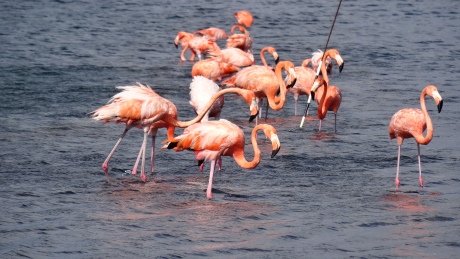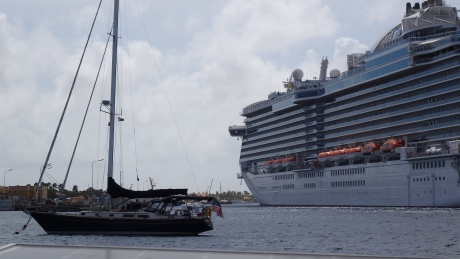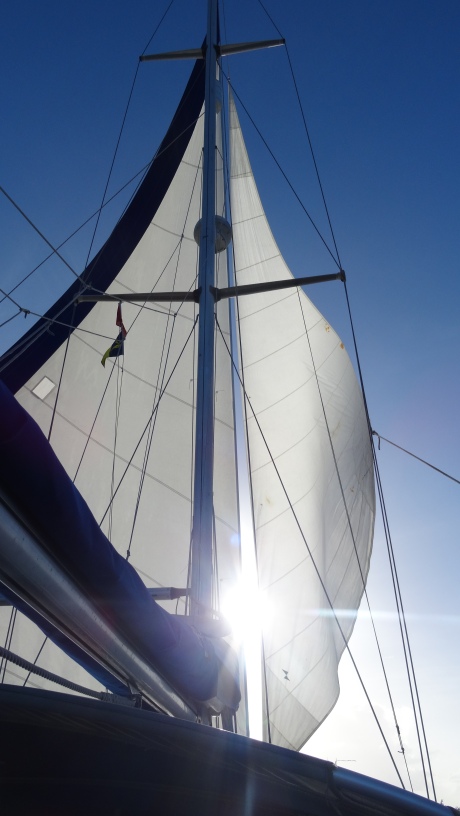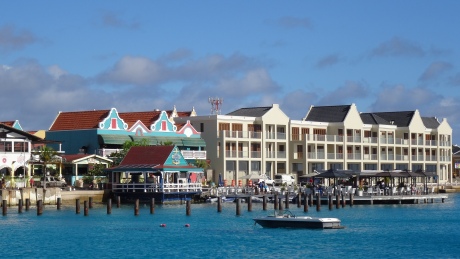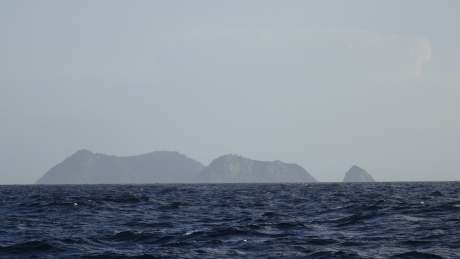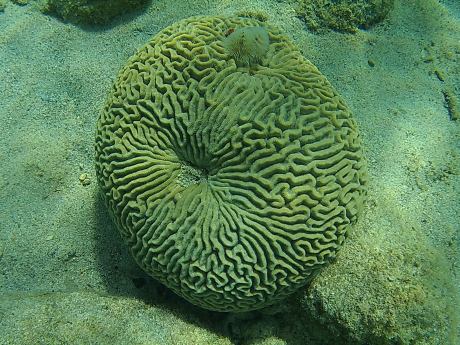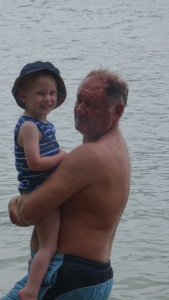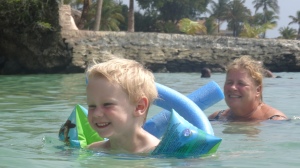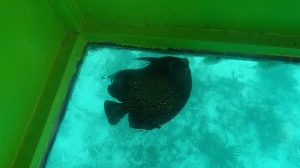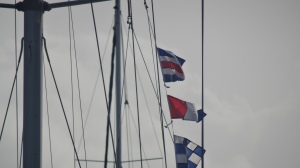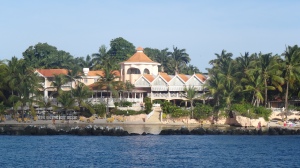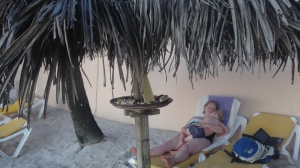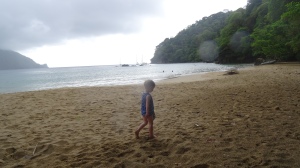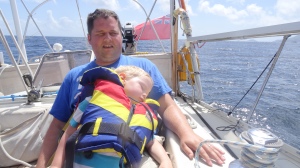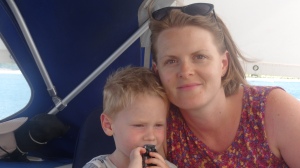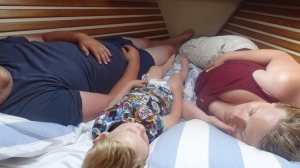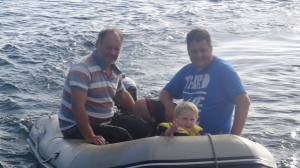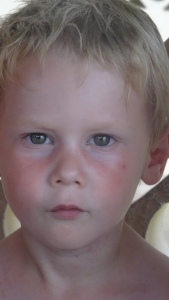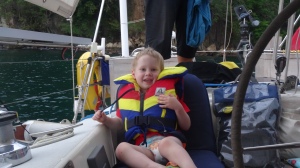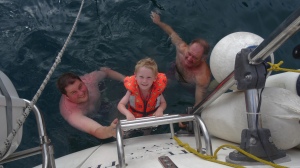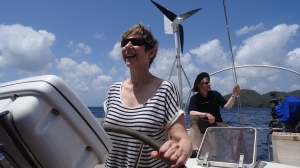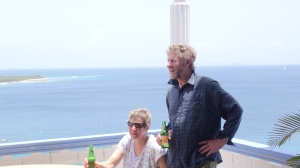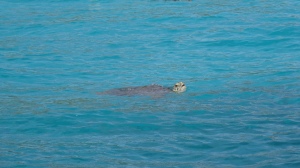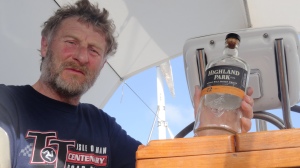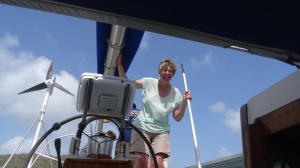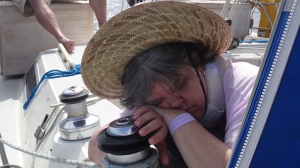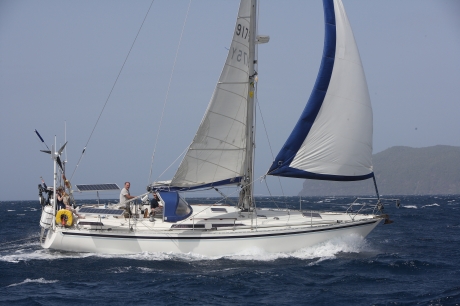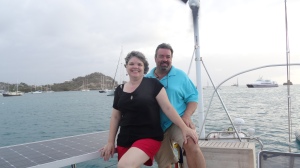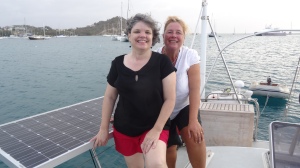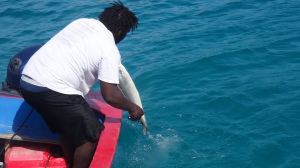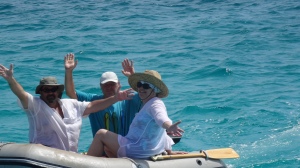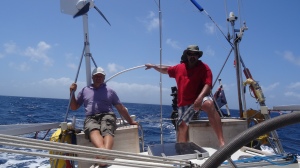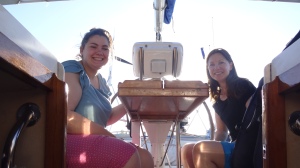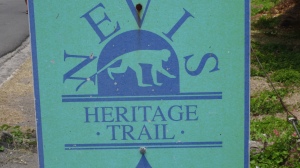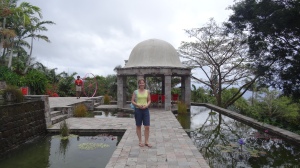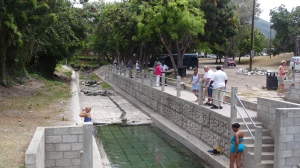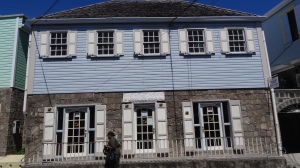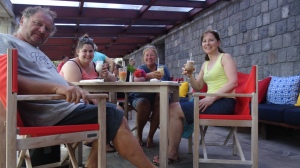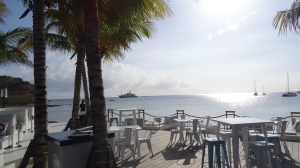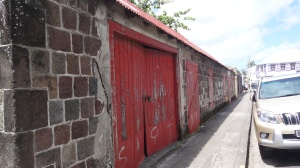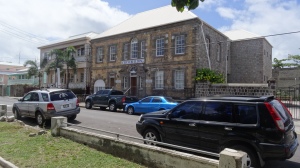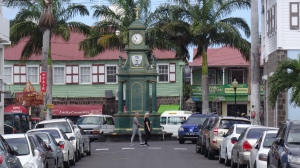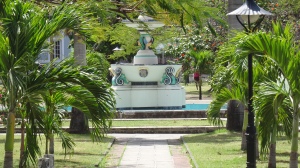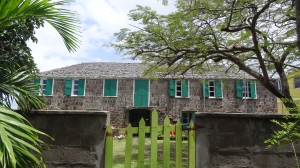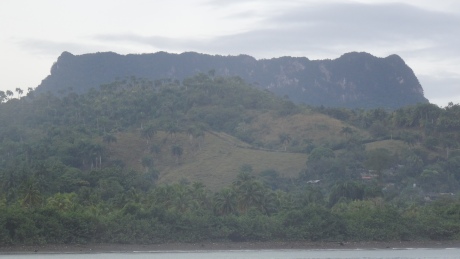
El Yunga
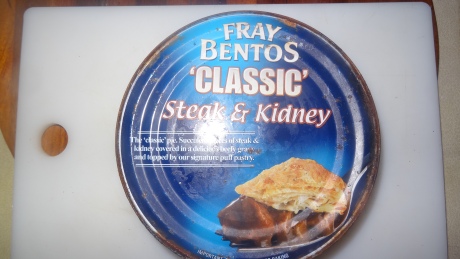
Scrag End Suppers – a stray Fray Bentos pie found deep in the bilge – delicious nonetheless!
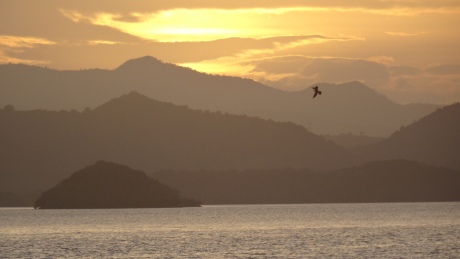
Sunset over Bahia Tanamo
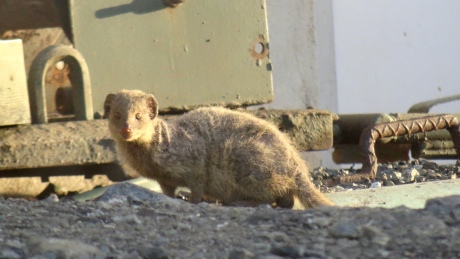
Our inquisitive visitor – Port Moa
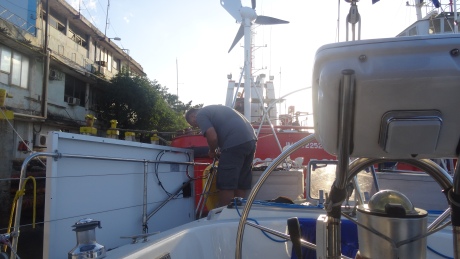
Repairing the damage….Port Moa
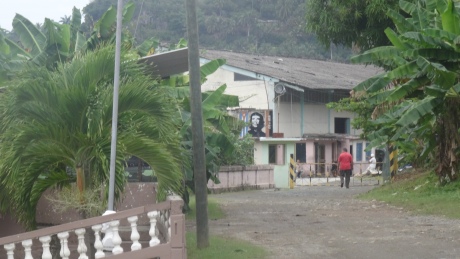
Che is everywhere!
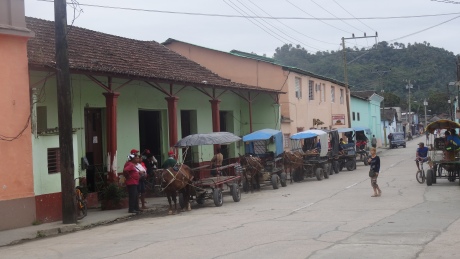
Taxi rank of horse and carts – Baracoa
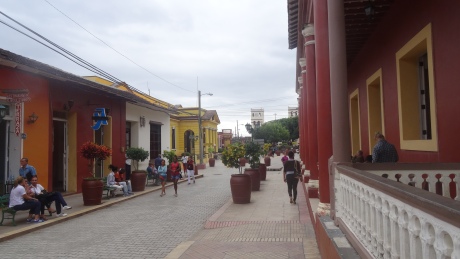
Baracoa, pedestrianised area.
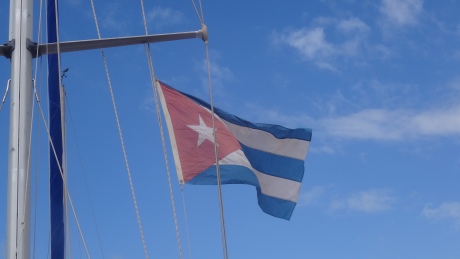
There are certain places that we have particularly wanted to visit during our Caribbean odyssey. Cuba is one of them. This wish has intensified this past year by the news that the US is now trying to cosy-up a little more to Cuba, which will inevitably lead, many feel, to the unique character of the island being altered – perhaps beyond recognition in the longer term. Cuba has been a holiday destination for Europeans for several decades if not longer so what is so different I hear you ask? The difference is, Cuba has only recently permitted tourists on yachts to visit and even now it is treated with much suspicion. There is a fear that visitors on private vessels will lead to an exodus of Cubans who want to leave the constraints of their exacting lifestyle for the relative freedom of foreign shores.
As we left Jamaica we were therefore full of anticipation that we were at last going to experience Cuba. It was a twenty-four hour trip and for the majority of way we had to motor – much to Skipper’s chagrin. Nonetheless, early one January morning we found ourselves just off the jagged, mountainous coast heading for the port of Santiago de Cuba alongside several huge tankers. Judging by the jabber on the VHF radio they were all awaiting their pilots. Needing no such assistance we jumped the queue, calling on the radio as we entered the mouth of the bay to the Guardia Frontera as we had been directed by our online cruising guide. There being no answer, we tentatively followed the buoyed channel, past the huge fort darkly silhouetted in the monochrome dawn, and into a vast sheltered bay. As the sun came up the hills surrounding us came into colourful focus: lush green slopes and craggy higher mountains in the distance surrounded a huge basin. It was much prettier than we had been led to believe. On closer inspection we could spy, however, the tip of a belching chimney behind one of these luscious hills – all was not perhaps as pretty as it first seemed then. Soon the radio stuttered into life and a voice asked the yacht approaching the marina to proceed and prepare to anchor – oh and ‘welcome to Cuba’! We had indeed arrived then.
We had been prepared, by all our research, for the entry procedures to be rigorous, so we were not surprised to be placed in quarantine by being asked to anchor until the public health inspector could confirm our health. We sat and drank coffee taking in our surroundings – a couple of concrete quays and a couple of other crumbling supports which probably held other once held more quays. The marina buildings ashore and an adjoining hotel looked fairly modern and in good repair. We were being waved at by a couple on another yacht already alongside. We made contact by VHF, learning that they were Ocean Cruising Club members with whom we had spoken to several times before on the OCC net. It is always reassuring to know someone has blazed a trail before you when arriving in a strange place – and Cuba is stranger than most. After a few hours (well, we had arrived early in the morning) a ferry approached us and onto our boat stepped a statuesque lady with red hair – no, not ginger hair – but bright scarlet hair! In broken English she said she was the health inspector. Not quite what we were expecting – but somehow Miss Scarlet it was not! She had reams of forms to complete – all of which she had trouble with because her long, bejewelled, purple finger nails ensured she had to write very slowly at a very strange angle. This was the first of many occasions where our lack of Spanish made us feel foolishly inadequate, but somehow we managed to get through her questions – food storage, our body temperatures, fridge and freezer temperature, flushing toilets….she seemed happy enough with everything but then cornered Gill asking for a ‘gift’. Our OCC friends had warned us during our radio chat that this might be the case. We had no local currency and anyway, being British, do not like paying bribes of any sort, so Miss Scarlet was treated to Gill’s best smile and a prepared gift of a few bars of nice soap, tied up with a little bow. Apparently nice soap is difficult to come by and therefore a luxury in Cuba, but Miss Scarlet was obviously disappointed that hard cash was not on offer. Was this, we wondered, going to be the way of things in Cuba? A slightly miffed Miss Scarlet instructed us that we could now take down our yellow Q flag and take the boat to our allotted berth on the concrete quay. There we were met, helped with our lines and given a thoroughly warm welcome, but asked to wait again for more officials to clear us in. After more, very neccassery, coffees a steady stream of officials came aboard: customs with their sniffer dog (a very cute cocker spaniel), the veterinary inspector (despite having no pets aboard but she wanted to check our meat stocks), the agriculture inspector (fruit and vegetables and meat stocks again – the freezer was getting a good airing) and finally the Immigration officer accompanied by the Guardia Frontera. They wanted to know where we planned to go from Santiago. We had about 10 places on our itinerary from Santiago de Cuba marina around the eastern tip of Cuba to the north coast and thus to Bahia de Vita where the next available Marina has its home. The young Immigration officer carefully explained to us in passable English that we would not be able to get off the boat in any anchorages along the way – even though there were only anchorages to be had – and that at each anchorage we were to make ourselves known to the Guardia Frontera. We had been told this would be the case but to hear it spelt out was a little daunting. Cuba is a big island. Our planned trip took in 300 miles of it, so the thought of not being able to get off the boat, explore or re-provision was daunting to say the least – but we knew they had their reasons for these rules. There was no option but to smile, nod and comply.
When we enquired at the Marina Office about internet. The Marina Manager of the day looked strangely at us as though we had asked for a ticket to the moon. He said no, no they had not had any internet since the last hurricane had hit them in 2011. After further research from other yachties we were told that only workplaces where it was felt it was essential to have access to the internet – plus schools and colleges – were permitted it and then it is strictly monitored and censored. There was a way though we were told – the telephone provider – a state monopoly of course – had a shop on the main square in Santiago de Cuba where you could purchase a scratch card which entitled you to an hour on one of their computers – not wifi but internet access. One of the others commented with a sigh though that when they had tried to get a scratch card the queue had been enormous so they had given up. Oh well, much as we missed our skype chats at least we had sailmail on the boat enabling us to send and receive messages. Even mobile phones, we learnt, were strictly regulated by the State. International calls on land lines, apparently, could only be made at vast expense at some hotels. So this was Cuba.
We were determined to thoroughly explore Santiago de Cuba before being consigned to the boat for at least 3 weeks. We ordered a taxi from the marina manager Jorge which he shared with us on his way home early one morning. Our taxi was a boxy, angular Lada from about 1970 – obviously cherished by the driver – who stroked the roof lovingly as he proudly opened the door for Gilly. Jorge explained that after the revolution in the late 1950’s there were no new cars for a long time – the only vehicles were old American cars which were still in evidence everywhere and very much a relic of a large American presence on the island. He explained that if you owned a pre-revolutionary car then it was nigh on impossible to get spares as all imports from the US and Europe had stopped completely. The only new cars were of Russian origin and this was one was one such model. As we approached the city we were swarmed by buzzing, weaving motorbikes everywhere most with pillion passengers, bony work-worn ponies with traps for two or larger wooden-benched carriages for more. There were also many belching old trucks reminiscent of old war films – 4 tonners with troops sat on either side and the back lifting down to let them out. Jorge told us these were public buses and on closer inspection, yes, we could see passengers not soldiers crowding the space behind the cab. He insisted these were not for tourists to use. We were definitely in a very different place.
We had previously asked Jorge that the taxi let us out at a bank as we could do nothing without some currency. As with everything in Cuba this was not ordinary….banks come in many different varieties. There is a double economy in Cuba: convertible pesos (CUC$) and Cuban pesos (referred to as Moneda Nacional or MN). All the things tourists are likely to buy – accommodation, car rental, coach tickets, museum tickets etc. – are in CUC$. Not being typical tourists we also needed to go to the local market (mercado) and grocery shops to provision so we also needed to get some MN. All this could be accomplished, we were promised by Jorge before he left us in the, maelstrom of central Santiago, at a Cadeca. With that our trusty Lada stopped to deposit us outside an austere building with a ‘don’t-mess-with me’ guard protecting the door. Said guard miraculously allowed us through the door where we were shown to a booth with a non-smiley, self-important female cashier behind bars, tapping away at an ancient computer, where after close examination of passport, visa and bank cards, she ungraciously permitted us access to our money which Colin knowledgably requested in both CUC$ and MN. Job done. Wallet bulging with grubby pesos and pristine convertibles we headed off into the city. Jorge had advised us to stick to the pedestrian streets to keep out of the chaotic and fumey traffic. We soon found the more peaceful walkway which took us past uniform concrete shop fronts, none seemingly showing their wares, but many with burgeoning queues of people outside. Through the windows we could see some groceries on shelves behind a counter – huge cans of mixed vegetables, large packs of coffee other seemingly random items with eager crowds surveying the sparse wares enthusiastically. There were other shops with toys in the window but nothing high tech – just push along cars (bearing a little resemblance to the old Russian or ancient US cars on the roads) The rather dull shops were interspersed with welcome park areas where Sandiagoites sat in their hundreds watching each other and the day go by.
The main square – Parque Cespedes – in the centre of the old town was where we were heading. The square was enclosed by magnificent buildings representing many eras of Cuba’s past: the severe concrete blocks of the post-revolution national bank; the ethereal Wedgewood blue confection of the restored Neo-classical cathedral; Casa de Diego Velazquez – the beautifully maintained original governor’s 1516 mansion (now a museum) and the magnificent colonnaded Hotel Casagrande frequented by the likes of Graham Greene in the early 1950’s. This was all almost too much to take in. Despite the temptation of a coffee under the open arches of the hotel café we decided we had better continue our tour and headed back to the pedestrianised street which was taking us down towards the bay where, in a few hours, a ferry would take us back to the marina. We did manage to find a place for a coffee eventually but the sullen waitress said that no, we could not have milk. So after black coffee, onwards, past more queues and huddles of sandiagoits outside shop doorways. Our attention was caught by crowd of blokes outside a DIY store looking rather pleased with themselves for having each acquired what looked like strips of curtain rail. These, I should add were not desperate, shabby-looking individuals – everyone we encountered was well-dressed and groomed – just seemingly unable to acquire whatever it was they needed except on a very ad hoc basis. Nearly at the waters-edge we passed huge, well –guarded, open-fronted warehouses where thousands of sacks of rice and flour were piled floor to ceiling.
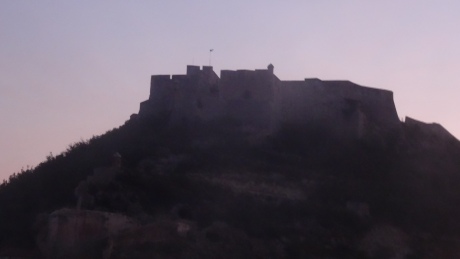
Dawn over Santiago de Cuba Fort
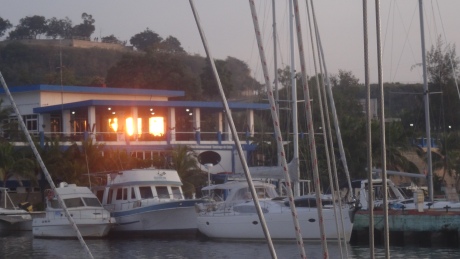
Santiago de Cuba Marina
To an elderly pre-revolutionary Cuban mind, the city of Santiago de Cuba is synonymous with the internationally famous Bacardi rum. In fact the original Bacardi rum factory built in 1868 still produces loads of rum – about 9 million litres a year apparently, 70% of which is exported – but none of it is the famous Barcardi variety. The Spanish-born founder of the dynasty, Don Facundo Bacardi, dreamt up the famous bat logo for the brand after finding loads of them in the rafters. However, the Bacardi family fled Cuba post-Revolution and have pretty seamlessly continued their operations in a new headquarters in the Bahamas. Despite some of their predecessors (notably, Emilio) being fervently in favour of Cuban independence from the Spanish, their relationship with the Cuban government is now famously fraught but the legacy of the family’s prosperity lives on in a museum on the main square founded by Emilio in 1899. Rather disappointingly though, it has nothing at all to do with rum…..instead the museum houses eclectic antiquities and artifacts from all over the world –including an Egyptian mummy – amassed from Mr Bacardi’s travels.
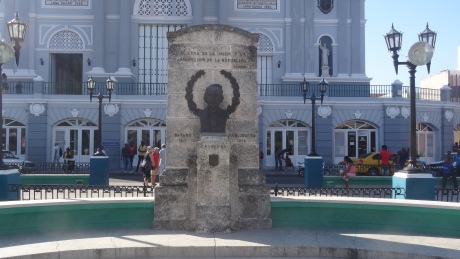
Parques Cespedes
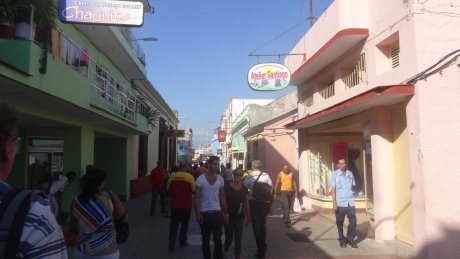
Santiago de Cuba pedestrianised area (our first Cuban high street!)
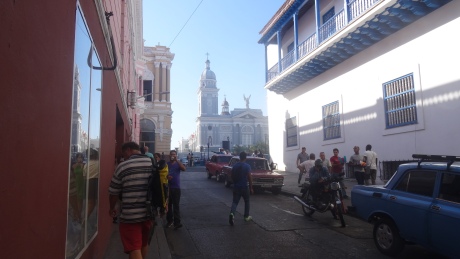
Walking towards Parques Cespedes with Cathedral de Neustra Senora de la Asuncion appearing.
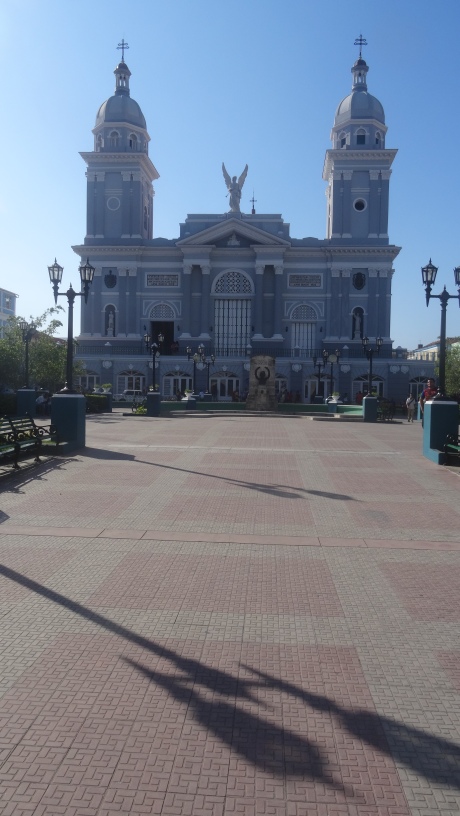
The Cathedral itself
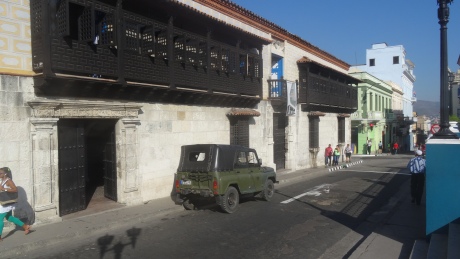
The Moorish style Casa de Diego Velazquez
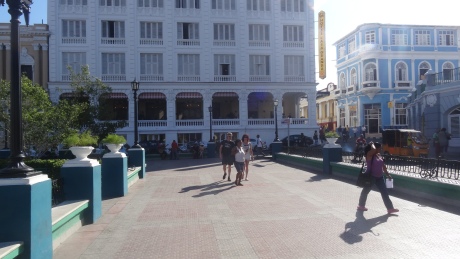
The Terrace of Hotel Casa Granda (of Graham Greene fame)
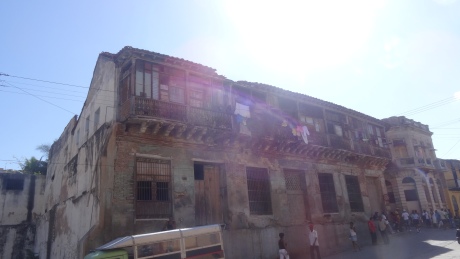
More conventional housing with lorry bus passing – opposite market, Santiago de Cuba
It was time for us to stop exploring and find the municipal market. On the map it looked easy but we did a bit of an up and down tour through the back streets where the buildings were often old and derelict or occupied but crumbling. By good fortune rather than good navigating we eventually stumbled across it. At the door was a lady selling carrier bags and we soon learnt why when we bought our first pound of tomatoes and no bag was offered. I hurried back to her, thus equipped with several bags we returned to the stalls of fresh, colourful fruit and vegetables which we were able to purchase for very few MN pesos. A chap came up to us saying ‘you want potatoes?’. As we still had a large cache of beautiful spuds from Jamaica on the boat we flippantly declined his offer – in retrospect a big mistake as potatoes are indeed as rare as hens’ teeth in these parts. We ventured over the road to the meat stalls which are never for the squeamish but managed to buy what we thought was a leg of lamb and some pork from a very grateful blood splattered chap. Again, we paid very little for what looked like decent protein. Fish we thought: here so near to the sea there must be some fish…..and on further investigation we smelt some out – but it was all frozen, ordered from a list on a blackboard on the wall. We took a guess and ordered what turned out to be large frozen prawns. Concerned that they would defrost before we got them back to the boat we only bought half a kilo – another mistake in retrospect as they were very cheap and absolutely gorgeous. We had also wanted to buy some bread but were fast learning that this was not easily available. The sandiagoits all patiently queued for bread and had tickets in their hands. We had heard that it was rationed and this seemed to be the case. With no ticket we could not buy. We have since taken to making bread – thank goodness we bought all that flour and yeast back in the Land of Plenty.
With a bit of time to spare before the ferry came we decided to have lunch at a restaurant by the ferry terminal over-looking the bay. At twelve midday we were allowed to take a seat (though the young tourist couple who had been waiting for it to open alongside us were turned away for wearing shorts – we too were wearing shorts but the length of ours was seemingly deemed more acceptable). There are different types of restaurant in Cuba – privately operated ones (paladares) have, in the last 5 years or so, been permitted to open providing they pay a monthly fee to the government, but this we strongly suspected was a government owned one, as the staff were rather dour and the menu rather limited. Colin chose some lobster and I tried some prawns. We had a glass of Sangria to drink……and we waited endlessly getting increasingly anxious that our ferry would arrive before we got our food. Eventually two plates were placed in front of us. Colin’s plate had a grey sludge on it with occasional bundles of grey matter – presumably lobster. There was a tablespoon full of rice on the plate too and about the same amount of diced cabbage and tomato. Mine was slightly more appetising as my few shrimp were in a tomato sauce but, alas, nearly cold. There was no time to make a fuss. We ate our lunches without relish. As we took our last mouthfuls we saw our ferry coming round the corner, so paid the bill (not at all cheap) and left…..feeling rather insulted at both the service and the food we had just endured. The ferry ride back to the marina with all the lively locals was enlightening as we passed close to the huge power station which we could glimpse from the marina. It looked rather sinister, belching thick acrid smoke from several chimneys. We were soon to learn the quite dire effect of that pollution on poor Resolute.
Back on the boat we unpacked our supplies, reassuring ourselves that we did indeed have enough of all the basics to survive our long trip around the coast without being allowed to get off. Our OCC friends in the marina where lamenting the ‘rash’ which was appearing on their decks – apparently due to the discharge from the power station. On close examination of ours, we too could see alarming orange freckles appearing all over the decks. Don’t worry, some other neighbours and the Marina Manager of the day reassured us, the marina sells some wonderful pink stuff which gets it off in a trice. If that is what the fumes are doing to our deck what is it doing to our lungs Gilly was thinking. All things considered we decided it was time to make tracks from Santiago de Cuba and start our rotation round the coast stopping to anchor here and there. After a hot, exhausting day scrubbing every inch of the decks with the magic pink potion (which turned out to be no more than toilet cleaner) to remove the unsightly patches of discolouration, we took our leave at sunset rather gratefully – but mindful that we had a long way to go before we could go ashore again.
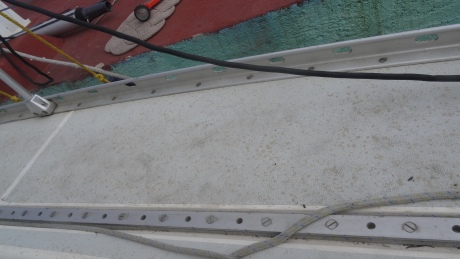
The ‘rash’ on Resolute’s decks….and everywhere
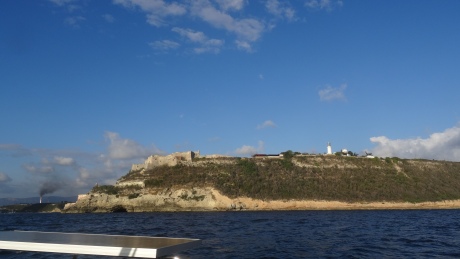
Goodbye to Santiago de Cuba – Fort, offending chimneys and all!
Our first leg of about 60 miles we did overnight – a bright moonful, starry, night where first we sailed along happily under headsail, but then as the night progressed, the breezes faded and the sea became glassy and so we took to motoring. The big attraction of this leg was that we were passing the infamous Guantanamo Bay. Colin was disappointed. He had read that it was possible to go into the bay if first you radioed the US coastguard there and explained you were intending only to visit the village behind the base, but the Guardia Frontera at Santiago had said quite clearly it was ‘prohibito’ to go there and in fact with our official papers which granted us permission to sail around Cuba (our despachio) there was a sheet in English explaining that we had to stay a good distance off the Bay entrance. Nonetheless, as we passed we felt we knew what the bright lights on the shore were hiding and it must be said our hearts went out to the prisoners in that desolate God-forsaken corner of Cuba. Be it 9/11 or the worst of the troubles in Northern Ireland it seems, with the advantage of hindsight, that whilst internment may have a positive effect in the very short term, it is simply incompatible with any form of democracy – just storing up resentment, which in turn prolongs the conflict. We sailed on by discussing the rights and more effusively the wrongs of this displaced sensitive outpost – its place in history seeming to be lost to both geography and intellectual debate.
The coast along this part of Cuba is striking. Plush green mountain slopes and lowlands of palm trees and lush vegetation. It is typified by pocket bays – narrow-entranced inlets giving way to large protected bays. As the sun rose the next day we spied the very narrow but well-buoyed entrance to our first bay – an entrance that would have been made very tricky in any swell…..but with the flat calm seas we motored in, keeping a firm eye on the depth, with no problem. What a stunning place! This large bay was surrounded by velvety, rolling hills. The rising sun was highlighting every aspect of its emerald grandeur. We tucked ourselves up in the corner of the bay well away from the little village on the shore and the entrance – safe from any wind or swell which may make its way in. Kettle on for a well-deserved coffee, we noticed a rowing boat approaching as fast as the poor grubby-vested Baitquirian could go. The passenger, we noticed as it got nearer to us, was in a dun coloured uniform and looked rather agitated. As soon as he was near enough, a barrage of staccato Spanish was emitted by him – completely wasted on us who understood not a word, but we could tell he wasn’t very happy. We handed him our despachio papers and he looked slightly less aggrieved. With great deliberation he transcribed some details on a piece of paper in the boat. He then gestured to us that we could not stay there. We must follow them. Kettle off. Anchor up. We dutifully followed the rowing boat to exactly the spot we did not want to anchor – close to the village and the entrance. Pointing to his eyes and then our boat he gestured that he needed to see us from his vantage point ashore. We were new to this game and did not want to cause his blood pressure to rise any further so we shrugged and agreed. He gave us a thumbs-up sign and smiled slightly at his minor victory and left us. Kettle on again. Our first brush with Cuba officialdom survived.

Baitiquiri Bay
Baitiquiri was the little habitation ashore – little more than a collection of dilapidated old harbour buildings and a salt lake. Salt had been its raison d’etre at some juncture and there were signs that a big concrete dock had once been in use. Now it was sleepy, though some ponies did turn up sometimes, their owners lazily acquiring some sacks of what we presumed was salt from the man in the hut by the lake. We could not go ashore but we could see there was nothing to go for anyway except a walk. The coast road which passed the village caused a rumble of vehicles to reach us sometimes – those military-style public buses, trucks, tourist coaches and the odd old car. We were content to stay there for several days just chilling and watching Cuba. We knew from our trusty SSB radio weather forecaster (Chris Parker) via his daily broadcasts that the weather was not going to be suitable for our next leg – the longest and most weather-sensitive as we had to round the headland to gain the north coast – for several days whilst a low passed through. Each day we had a visitation from a different Guardia Frontia – each asking if we had a problem – as normally a boat does not come in to any of these anchorages unless they cannot make their way for some reason. We tried to explain in our best newly-learnt nautical Spanish that we were waiting for the weather which they seemed to understand. We never saw Snr. Mucho Agitato again – who had greeted us that first morning in beautiful Bahia de Baitiquiri.
Surely not! The rash was coming back on all Resolute’s decks – even on the white life raft and on all the metal work. Whatever had contaminated us at Santiago de Cuba was playing hard to get rid of and looked pretty awful. Colin was dismayed……we would have a pock-marked boat forever with hardly any magic pink stuff left. He had seen this before whilst serving in the Balkans and on trips to the former East Germany and believed it was caused by the linings in the chimneys of the Soviet-style power stations. We decided to not worry until we got to Marina De Vita where possibly they would have some sort of chemical remedy.
Chris Parker gave us the all clear for our next leg out of the Windward Passage and into the Atlantic. This is where we could potentially meet some big Atlantic swell trying to force its way down the channel, but as we are learning, if Chris Parker says we are good to go we should trust him. Thus, early one morning we pulled up our anchor from our sleepy hollow, through the narrow channel to be met by some steep-ish waves and a gusty strong winds but, just as CP had said, it all calmed down quite quickly allowing us to enjoy the craggy coastline and the multiple light-housed corners we needed to turn before we could honestly say we were on the north coast of Cuba. Confused seas at times made the going a little lumpy but eventually, by late afternoon we found ourselves bombing along with the wind aft of the beam looking for the entrance to our next anchorage at a town called Baracoa….tucked up in a large bay on the north coast. As the sun set, there it was ahead. We felt our way in trying to get the lie of things in the near- dark and gratefully put the anchor down after our 80 mile long day. Uh oh….of course – don’t relax yet, we were forgetting the inevitable welcoming committee – this time a wooden boat full of uniformed young guys, torches blazing, who inspected our documentation as if they had never seen the like before. Again we tried to explain that no problem had caused us to pull into their bay but that we were tired and needed to rest. This time there was no attempt to move us as fortuitously we had parked ourselves right in front of their headquarters. Eventually they proceeded to go and I bravely suggested – pointing at myself …”err…mercado manyana?” The person who seemed in charge of the others (though still only about 18) seemed to nod with vague approval, so we went to bed excited that here, with a bustling town right on our doorstep we might be allowed ashore tomorrow to the market at least.
The next morning, in Saturday sunshine we were able to take in our surroundings. Across the large open bay was some ugly concrete apartment blocks, desperate for a lick of paint and already festooned with washing, but behind them was the most extraordinary mountain – robbed of its peak. El Yunque (The Anvil) is completely flat topped forming a vast, wide, bleak backdrop to the north of the bay. To the right of it we searched for another land-mark which our cruising guide had advised us to look for – La Bella Durmiente (The Sleeping Beauty). This was not a mountain but a series of interspersed hills that gave the silhouetted impression of a woman lying on her back when viewed from the perspective of the bay. Yes, there she was! Fancy , red-roofed, palatian style hotels (all government run – there are no privately owned hotels in Cuba) were also in evidence around the bay as well as little breeze-block rectangular dwellings on the water’s edge. A real mish-mash of Cuban life was out there. Buoyed with the idea that the young chaps we met last night might let us ashore we inflated the dinghy and ventured up to the concrete pontoon to which we had seen them disappear the night before. We watched the young guards look at us alarmingly as we ventured ashore and the oldest guy strode up to the crumbling landing dock. “ Mercado?” we ventured. “Only one” he sternly said. Oh….we had not anticipated this response and it rather threw us but we quickly decided that Colin should go ashore. He first took crestfallen Gilly back to the boat and ventured forth with his rucksack. Even though we had only been away from civilisation for about a week we still welcomed some new delights and Colin did not disappoint. From his rucksack on his triumphant return he produced tomatoes, peppers and onions, a pineapple and a bunch of tangerines still on their stalks. Wine and rice he had also found in a ‘dollar shop’ – a grocery shop of hundreds of years. Its boast is that it is Cuba’s oldest city, founded in 1511, but because of its position in the fairly inaccessible eastern extremity of Cuba and the fact that it is subject to fickle weather it became semi-abandoned by the mid-16th century, until in the early 19th century some French planters found their way there from Haiti – 70 miles away across the Windward passage. They successfully grew coconut, cocoa and coffee in the surrounding mountains, making Baracoa prosperous once more. The only road linking the city to the rest of Cuba was not completed until 1964, allowing Baracoa to develop in splendid isolation from the rest of Cuba giving it to this day a distinct independent identity. We, of course had little to compare it with but certainly it seemed very self-contained: wide pedestrianised avenues lined with coffee shops and bars where everyone seemed to know everyone else. Taxi ranks both of horses and carts and bici-taxi’s – Cuban rickshaws. Busy and bustling on a Monday morning but little on sale it seemed. I got in line to buy bread from what seemed to be a baker but was turned away, presumably because I had no entitlement to the rationed bread. I queued and was eventually permitted to enter the dollar shop but found little to buy but took pity on the last tin of sweetcorn. Everyone in the streets seemed to have trays of eggs but I could not find where they had bought them. Slightly disconsolate I walked back to the harbour where the young guards where eying me suspiciously. I took out my camera to take a picture of Resolute in the bay but this caused them to shout “no” and wave their hands in panic. My Spanish was too poor to defend myself, so I sighed and put my camera away again waiting for Colin to dinghy me back to the boat. My experience of Baracoa had not been too positive, but I reasoned it had been good to get off the boat and at least visit another Cuban town.
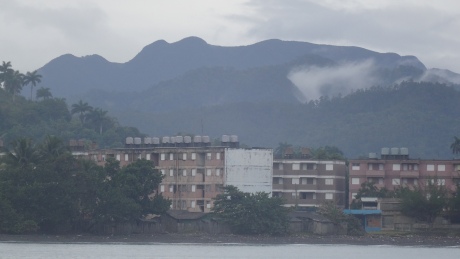
The Sleeping Beauty reposing behind typical Soviet-esque shabby blocks of flats
The next legs of our coastal trip were to be shorter hops with the winds, should the trade winds prevail at least (not a certainty this far north) behind us. With Chris Parker’s approval, we set off again one morning to sail a mere 15 nautical miles west to another pocket bay called Ensenada de Taco. The entrance to this bay was another narrow channel through a reef which could be tricky if the swell was big. Like all the other bay entrances we encountered though, no matter how small and seemingly deserted, the navigational buoys were all in place and well maintained making the approach route clear and relatively free from danger. Through the clamour of the waves crashing on the reef we rather bowled into this large bay to be met with the majesty of the surrounding lush slopes and the calm of the green reflections on the waters. It was simply gorgeous and completely deserted – a happy contrast to the close habitation surrounding us in Baracoa not to mention the close scrutiny of the guards.
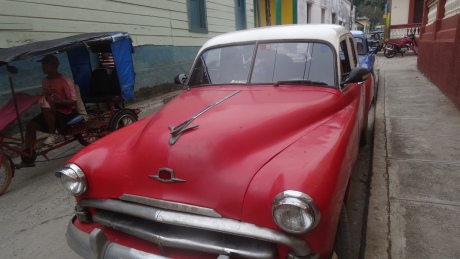
2 typical forms of Cuban transport in Baracoa
We waited. This time we would be ready for any officials who would inevitably come to check our papers…..but nobody came. We could see no possible outpost – perhaps the glimpse of a small fishing village as we had come in through the reef but nothing more. We knew though that this bay formed the outer extremes of a national park – in fact a UNESCO Biosphere Reserve no less. – (Parque National Alejandro Humboldt) which supposedly accounted for its reserved beauty, so it was even more likely we felt, that officialdom would meet and greet us here. Boats approached us tentatively – little fishing boats with staring, incredulous occupants. Each time we saw them heading for us we got our papers out in readiness – but each time were surprised to see no uniforms but just smiles and waves.
One day a boat with three local chaps stopped alongside us, examining the boat and making lots of admiring noises. They had a sack with them and eventually showed us their wares in side it – coconuts, fruit and wonder of wonders, three frozen lobster!..”Si “we said, “muchas gracias” but when we reached for some pesos they seemed reluctant to take hard cash. We offered them instead some quarter bottles of rum we had bought in the ABC’s. Oh Si! ..This was more like it. Eventually we settled on a few pesos and the rum for our hoard of goodies. They managed to communicate that the next day they were going fishing and would we like some fish. More Si’s. They came back all smiles the next day with three beautiful fish, some bananas and the local coconut confectionary we had heard about served in cones of banana leaves. This time they asked if we could give them some gasoline. We managed to decant a litre of petrol (which we use for the outboard) into a juice bottle for which they were mightily grateful, as well as more pesos and our last bottle of rum. Mutual happiness all round and not a uniformed official anywhere!
It was about at this juncture that we noticed something fundamental was changing: the temperature. During the day it was still T shirt weather on the whole, but now being out of the predictable, typical Caribbean trade-winds and being much more effected by the weather in the Eastern United States things were beginning to change. Our thin cotton duvet which we had not used in earnest since leaving Europe was given an airing and we were glad some nights to snuggle under it; the doughty fan in our bedroom was more off than on at night; the smaller chock to hold our bedroom hatch open at night was often being sought out. We were definitely heading to the chilly north……do we need our heads testing?
Then, after several more days in our little paradise, it was time to move on again. After a slightly nerve wracking exit from the reef-strewn outer reaches of the bay, we got into the deeper, calmer waters and headed west to our next port of call. This time it was a port too – we were heading for an anchorage just off the large industrial port of Cayo Moa which was 20 nautical miles away. It could not have been a more different world. We could see the looming, smoking chimneys from miles away. Moa was famous for the rich seams of nickel which is processed and exported from this port. Still, we only planned to stay here one night and our proposed anchorage mentioned in our on-line guide seemed well away from the grimy industrial heartland. Another well-buoyed channel took us through the ever-present reef and we could then spy the island we planned to anchor behind. We could hear lots of Spanish chatter on the VHF radio but none of it was intelligible to us (the only lawful international language between shipping is English). We crept into a well-protected but rather shallow spot and put the anchor down. No sooner had we done so than we noticed a great big tug-like boat careering towards us. With no by your leave it nosed very close to us – close enough to deposit two uniformed officials on our decks and then disappear. They had very little English between them, but eventually, with one of them repeating the only phrase he seemed to know …”this is the port” and pointing towards the chimneys ,we got the gist that they wanted us to move to the port. With their only means of transport having left they could not get ashore otherwise we surmised. To make absolutely sure that this was what was expected of us Colin turned on the GPS chart plotter and showed them on the screen where we were and zoomed out to show the port. They were both amazed at our technology and became very animated…”Si, ..this is the port”, The Moaite Sgt. animatedly repeated every 10 seconds as he stabbed at the spot on the screen. With a sigh then, we had no choice but to move. Colin pulled up the anchor and Gill steered us off the mooring spot which afforded her a round of applause from the two chaps. Against her instincts, she tried not to take feminist umbrage, bowing and smiling radiantly behind the wheel.
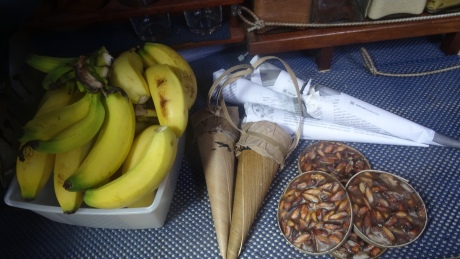
Our welcome swapsies from the fishermen in Esenado de Taco
On we went, in blustery conditions, to the so-called port authority buildings – where a crowd of uniformed and civilian Moaites stared at us in awe. The whole place looked very down-at-heel – three old tug boats tied up alongside each other on what looked like the only piece of viable jetty. We were expected to tie up in front of them on a very dilapidated concrete pontoon which was literally in pieces with hazardous wire and lumps of sharp concrete protruding everywhere, threatening the integrity of our fenders and our hull. Alert to the danger but assuming this was just a temporary stop where we would show our papers and then would be permitted to retreat to our anchorage again, Colin dutifully followed our excited officials ashore, leaping across the gaping gaps in the pontoon, with all our documents. He came back a tad forlorn and confused. The port Captain had appropriated some of the papers to have them copied. The longer Colin stood there the more he realised that this was not just a matter of sticking them under a photo-copier as there was none is sight. It seemed they were to be sent off with a dispatch rider on his old motorbike to somewhere to be copied. We waited and sat tight, fending the boat off as the wind and swell seemed determined to push our hull against the rough concrete. An hour passed and the sun was sinking fast. Colin jumped ashore again to ask about our papers as we could not leave without them but the “Capitain” seemed to shrug him away despite Colin insisting we could not stay on the old decrepit jetty overnight. Eventually, at last light and with no papers it was decided we should move to go alongside a little old fishing boat tied to the main harbour wall. We made the move to leave but it was a tough call as all the concrete debris in the shallow water and all the sharp edges made our only line of approach a steep turn from the hull of the third tug outermost. Much to the amusement of the assembled unhelpful audience, just as we got past the bows of the tugs the wind gusted strongly and we were pinned against them. Thankfully the crews on board the tugs heard the commotion and came to help us – some on their tall bows trying to hold us off by our shrouds, others getting aboard the little fishing boat and taking our lines to haul us in, Colin trying to protect our solar panel which was hard up against the tug. After much shouting, pushing and pulling we arrived alongside the small fishing boat….muchas gracias-ing our helpers abundantly. In normal circumstances it would have been ‘come aboard for beers all round’ but sadly we knew they were not permitted to come aboard or even accept a beer. We surveyed the damage. Somehow the solar panel had survived intact, in fact the only thing which had suffered was a distinct bend in one of the supports for the wind vane (Dervish). Colin was soon able to bend it back into shape and remove the blue paint from the tug’s bow. A lucky escape. So there we were alongside a very grotty little boat, which in turn was alongside a very grotty harbour wall, which in turn was alongside a very grotty warehouse. We spied movement in the tangle of weeds ashore and immediately worried it might be a rat but a little stoat-like creature turned to stare at the new arrival on his patch, scampering off in seeming disapproval. Tired, frustrated and being eaten alive by insects, we had a quick supper and retired to bed.
Next morning before it was light a large engine grunted noisily to life seemingly in our cabin. On investigation it appeared that the fishing boat we were tied up to had started its engine (with a spanner and hammer) and amidst clouds of breath-taking white diesel fumes and lots of Spanish staccato, was raring to go. We explained, in our best Spanish to these persistent fishermen that we were not going to move until we had our papers from the Porto Capitaine. Eventually, about an hour later, by Colin badgering and cajoling and engaging the fisherman (who needed to work) on our behalf ,the Capitaine returned our papers and we made a hasty exit from Cayo Moa. It was becoming increasingly clear to us that though we were following a route and anchorage stops suggested in an online cruising guide by a chap called Frank, judging by the quizzical looks with which we were received everywhere and the lack of any plan of how to deal with these astonishingly lavish vessels and their strange foreign inhabitants, nobody but Frank and us had done this before. A tried and tested modus operandi it certainly was not!
Feeling a tad dispirited by our Moa experience it was tempting to put in a longer hop to go directly to Marina de Vita, where at least they would expect and understand the needs of yachts and what’s more we would be allowed ashore again. However, we still had plenty of time before we met up with Chris, Tanvi and grandson Charlie in Havana……what’s more the whole point of the exercise had been to see and experience as much of the real, unadulterated Cuba as we could. The latter we were certainly achieving. So to our next anchorage we boldly went….determined not to be put off by whatever Cuban officialdom dreamed up this time by way of a greeting. This pioneering spirit sailed with us the 26 nautical miles to our biggest pocket bay yet – Bahia de Sagua de Tanamo. In through the well-buoyed narrow channel through the noisy, surging waters over the reef which then opened out into a peaceful hinterland of flat lake-like waters and islands as far as the eye could see. The contrast was incredible. Our new-found pioneering spirit to the fore we decided to shun Frank’s anchorage suggestions and headed into the bay round another corner or two to a more secluded and sheltered spot. Chris Parker, our weather guru had alerted us to the fact that there was a trough coming which would give us a spell of strong winds and rain, so we wanted to be as protected as possible. As we sipped our sun-downers in splendid isolation without a soul in sight, we congratulated ourselves for finding such a wonderful spot….what a difference a day can make!
We were left to enjoy our idyllic anchorage in the grey squally rains of the next few days, contenting ourselves with bread-making, spring-cleaning (that Santiago ‘rash’ was still so noticeable on every outside surface) and relaxing. With our supplies now dwindling it became a daily pre-occupation to dream up a spanking dinner with few ingredients and using as little cooking gas as possible (as gas was also a dwindling resource). Little fishing boats would occasionally pass us with astonished stares (but unfortunately no offers of fish) but other than that our presence seemed to go un-noticed….until the day before we were leaving. What seemed like just another fishing boat approached us rather too decisively and once alongside spoke to us in the usual rabid, unintelligible Spanish. No-one was in uniform but the chap steering the boat gestured by tapping two fingers on his shoulder, that the other man was an official of some kind. However, before letting him close enough to step on board, we asked for some identification and sure enough it transpired that we had been discovered in our little dingle. This chap though was good natured and laconic. We showed him our papers and he copied the necessary information without the due consternation into his notebook. We were able to convey to him that no, we had no problem but that we were sitting out the bad weather and hoped to move on manyana. With smiles and waves they left us to our last night in tranquil Tanamo.
Nearly there! Another 26 miles (about 6 hours) through the post-trough choppiness and we were in a deep bay which in turn housed the small entrance to the biggest pocket-bay in Cuba – Bahia de Nipe. The further west we ventured the more tourist resorts and beaches were visible ashore and with it we hoped would be more tourist-savvy (and dare we hope for some English-speaking too?) officialdom – but we were to be disappointed. Somehow no connection was made in the Cuban mind between innocuous hotel-bound tourists and people like us on yachts who were treated so suspiciously –as though our only mission was to test the very integrity of their borders. There being no other obvious choice, as the bay was just too deep for us to drop anchor anywhere else, we followed Frank’s advice to the letter anchoring in inlet adjacent to a resort. This massive bay housed anchored tankers, chimney-stacked factories, the odd oil refinery and tourist resorts with their incumbent catamarans – a different scenario completely from tranquil Tanamo. No sooner had we settled ourselves than we heard shouting from the nearby jetty. A local fishing boat, just passing us and minding his own business was being beckoned to come ashore to pick up two chaps in uniform. They had to be coming our way we thought….and so they were.
So used to the form by now, we were able to reassure them that there was no problem and we just wanted to stay a few days before going on to Marina de Vita which they recognised – it being only another 20 miles or so hence. We hoped this explanation and the reading of our our despachio would grant us permission to stay, but after numerous radio and mobile phone conversations, presumably with his senior, who sounded very gruff, we were being asked to move and they got on board. Oh no! Colin tried to reason with them that there really was nowhere else in the bay that was less than 10 metres deep – the maximum in which we could anchor. Despite these two smart young chaps being stupefied by the chart-plotter map which Colin was showing to them, they insisted we try to anchor near the entrance to the bay so that we could be overseen at all times from the Guardia Frontera office. It was useless arguing with them – we did not have the vocabulary or the strength. So as the sun started to set, with the two of them on board, chatting and giggling to each other with nervous machismo, we motored to where they had suggested. 24 metres deep it said on the depth gauge! Trying not to become exasperated using every gesture and nuance we could muster, we explained that it was just too deep for our anchor chain. Eventually, we could see the peso drop….one of them understood what we were saying, relayed it to the other one who got on the radio to the gruff Poort Capitain again. During the ensuing long rapid-fire Spanish exchange on the radio, we quietly steered Resolute back to the spot from whence we came. As if in answer to a prayer, a big tourist catamaran was just about to tie up to the jetty and shouted a cheerful hello to us in English. Sensing we were in trouble he manoeuvred close enough for us to explain our problem with the onboard officials. He explained to them about yachts not having endless anchor chain to park in deep water. It was a revelation to these two young guys. Yes, the catamaran captain said patiently, this was the only place the British yacht could stay and yes, despite being out of sight from the Guardia Frontera lookout they would be fine there. By the time Gruff Port Capitain on the other end of the radio had reluctantly agreed with the plan the anchor was down and the dearly beloved catamaran had taken off the happily de-mobbed young uniforms and put them ashore. We were back where we had started from some 2 hours earlier. Oh Cuba! Why art thou so mucho vexatious!
We waited again for a few days to get the optimal weather for the final leg of our Cuban journey by sea at least. This time it was slightly longer – 40 nautical miles. We were really looking forward to getting to a place where we could tie up to terra firma and step ashore legitimately – and hopefully too where foreign yachts where expected, nay welcomed. Heading along the coast here were a profusion of resorts some with little dinghies with colourful sails zig-zagging across in front of us. We were definitely in Tourist-Land here. After a long day but a good sail we turned the corner at the lighthouse to Bahia De Vita. The buoyed channel was a tad tricky as it had several buoys which were both red and green marking other channels but Colin had sorted them out in advance and also ensured we were arriving at about high water, so we made our way through the shallow channel when a call came on the radio please proceed to the dock and we will help you!” From then on everything went swimmingly. The Immigration chap was very dapper and friendly, explaining himself in splendid English. When he found out Colin was ex-military he asked tentatively….” I hope Sir I am being professional with all this am I?” We could not, and of course would not, fault him. The worries we had about extending our Tourist Visa by another month, and of allowing Chris, Tanvi and Charlie aboard for the 4 remaining days of their stay after our tour posed no problem at all. Wonderful! We then climbed the steep staircase, on rather wobbly legs which were not used to walking far let alone climbing, to see the Marina Manager Janet. She too was very helpful, explaining what they had to offer at the marina: a small shop (with more huge cans of vegetables….but more essential things besides…like wine and beer for example); showers; a restaurant (only open for breakfast and lunch at the moment as guests were so few); laundry could be done; travel plans could be organised and….saving the best until last…..internet (not wifi, but 2 computer terminals circa 1982 for which scratch cards could be bought giving an hour access to the internet for $CUC2. On further investigation it was not free internet as we know it – no Skype permitted, no Facebook…but at least we could check and send emails and find out what was happening in the world). Cash was required to pay for everything and the nearest place, Janet explained, to get cash was a Cadeca in the village of Santa Lucia a taxi ride away of about 5 miles. That was for another day. For the time being we were extremely content to have arrived at such a genial, welcoming place at last.
imported goods which could only be bought with CUC. However, he could not find potatoes or bread….but no matter. A good haul indeed.
We decided that we would give the consideration of the guards another try on Monday morning. We thought a change of staff might look on us more favourable perhaps. This we did, but alas Gilly was dispatched on her own, putting paid to any lunch plans we may have imagined. It was good though to get ashore, have a good walk, and explore the town. Already our waistlines were telling a tale of too much food without enough exercise. Baracoa had been geographically isolated for many
Cuba
There are certain places that we have particularly wanted to visit during our Caribbean odyssey. Cuba is one of them. This wish has intensified this past year by the news that the US is now trying to cosy-up a little more to Cuba, which will inevitably lead, many feel, to the unique character of the island being altered – perhaps beyond recognition in the longer term. Cuba has been a holiday destination for Europeans for several decades if not longer so what is so different I hear you ask? The difference is, Cuba has only recently permitted tourists on yachts to visit and even now it is treated with much suspicion. There is a fear that visitors on private vessels will lead to an exodus of Cubans who want to leave the constraints of their exacting lifestyle for the relative freedom of foreign shores.
As we left Jamaica we were therefore full of anticipation that we were at last going to experience Cuba. It was a twenty-four hour trip and for the majority of way we had to motor – much to Skipper’s chagrin. Nonetheless, early one January morning we found ourselves just off the jagged, mountainous coast heading for the port of Santiago de Cuba alongside several huge tankers. Judging by the jabber on the VHF radio they were all awaiting their pilots. Needing no such assistance we jumped the queue, calling on the radio as we entered the mouth of the bay to the Guardia Frontera as we had been directed by our online cruising guide. There being no answer, we tentatively followed the buoyed channel, past the huge fort darkly silhouetted in the monochrome dawn, and into a vast sheltered bay. As the sun came up the hills surrounding us came into colourful focus: lush green slopes and craggy higher mountains in the distance surrounded a huge basin. It was much prettier than we had been led to believe. On closer inspection we could spy, however, the tip of a belching chimney behind one of these luscious hills – all was not perhaps as pretty as it first seemed then. Soon the radio stuttered into life and a voice asked the yacht approaching the marina to proceed and prepare to anchor – oh and ‘welcome to Cuba’! We had indeed arrived then.
We had been prepared, by all our research, for the entry procedures to be rigorous, so we were not surprised to be placed in quarantine by being asked to anchor until the public health inspector could confirm our health. We sat and drank coffee taking in our surroundings – a couple of concrete quays and a couple of other crumbling supports which probably held other once held more quays. The marina buildings ashore and an adjoining hotel looked fairly modern and in good repair. We were being waved at by a couple on another yacht already alongside. We made contact by VHF, learning that they were Ocean Cruising Club members with whom we had spoken to several times before on the OCC net. It is always reassuring to know someone has blazed a trail before you when arriving in a strange place – and Cuba is stranger than most. After a few hours (well, we had arrived early in the morning) a ferry approached us and onto our boat stepped a statuesque lady with red hair – no, not ginger hair – but bright scarlet hair! In broken English she said she was the health inspector. Not quite what we were expecting – but somehow Miss Scarlet it was not! She had reams of forms to complete – all of which she had trouble with because her long, bejewelled, purple finger nails ensured she had to write very slowly at a very strange angle. This was the first of many occasions where our lack of Spanish made us feel foolishly inadequate, but somehow we managed to get through her questions – food storage, our body temperatures, fridge and freezer temperature, flushing toilets….she seemed happy enough with everything but then cornered Gill asking for a ‘gift’. Our OCC friends had warned us during our radio chat that this might be the case. We had no local currency and anyway, being British, do not like paying bribes of any sort, so Miss Scarlet was treated to Gill’s best smile and a prepared gift of a few bars of nice soap, tied up with a little bow. Apparently nice soap is difficult to come by and therefore a luxury in Cuba, but Miss Scarlet was obviously disappointed that hard cash was not on offer. Was this, we wondered, going to be the way of things in Cuba? A slightly miffed Miss Scarlet instructed us that we could now take down our yellow Q flag and take the boat to our allotted berth on the concrete quay. There we were met, helped with our lines and given a thoroughly warm welcome, but asked to wait again for more officials to clear us in. After more, very neccassery, coffees a steady stream of officials came aboard: customs with their sniffer dog (a very cute cocker spaniel), the veterinary inspector (despite having no pets aboard but she wanted to check our meat stocks), the agriculture inspector (fruit and vegetables and meat stocks again – the freezer was getting a good airing) and finally the Immigration officer accompanied by the Guardia Frontera. They wanted to know where we planned to go from Santiago. We had about 10 places on our itinerary from Santiago de Cuba marina around the eastern tip of Cuba to the north coast and thus to Bahia de Vita where the next available Marina has its home. The young Immigration officer carefully explained to us in passable English that we would not be able to get off the boat in any anchorages along the way – even though there were only anchorages to be had – and that at each anchorage we were to make ourselves known to the Guardia Frontera. We had been told this would be the case but to hear it spelt out was a little daunting. Cuba is a big island. Our planned trip took in 300 miles of it, so the thought of not being able to get off the boat, explore or re-provision was daunting to say the least – but we knew they had their reasons for these rules. There was no option but to smile, nod and comply.
When we enquired at the Marina Office about internet. The Marina Manager of the day looked strangely at us as though we had asked for a ticket to the moon. He said no, no they had not had any internet since the last hurricane had hit them in 2011. After further research from other yachties we were told that only workplaces where it was felt it was essential to have access to the internet – plus schools and colleges – were permitted it and then it is strictly monitored and censored. There was a way though we were told – the telephone provider – a state monopoly of course – had a shop on the main square in Santiago de Cuba where you could purchase a scratch card which entitled you to an hour on one of their computers – not wifi but internet access. One of the others commented with a sigh though that when they had tried to get a scratch card the queue had been enormous so they had given up. Oh well, much as we missed our skype chats at least we had sailmail on the boat enabling us to send and receive messages. Even mobile phones, we learnt, were strictly regulated by the State. International calls on land lines, apparently, could only be made at vast expense at some hotels. So this was Cuba.
We were determined to thoroughly explore Santiago de Cuba before being consigned to the boat for at least 3 weeks. We ordered a taxi from the marina manager Jorge which he shared with us on his way home early one morning. Our taxi was a boxy, angular Lada from about 1970 – obviously cherished by the driver – who stroked the roof lovingly as he proudly opened the door for Gilly. Jorge explained that after the revolution in the late 1950’s there were no new cars for a long time – the only vehicles were old American cars which were still in evidence everywhere and very much a relic of a large American presence on the island. He explained that if you owned a pre-revolutionary car then it was nigh on impossible to get spares as all imports from the US and Europe had stopped completely. The only new cars were of Russian origin and this was one was one such model. As we approached the city we were swarmed by buzzing, weaving motorbikes everywhere most with pillion passengers, bony work-worn ponies with traps for two or larger wooden-benched carriages for more. There were also many belching old trucks reminiscent of old war films – 4 tonners with troops sat on either side and the back lifting down to let them out. Jorge told us these were public buses and on closer inspection, yes, we could see passengers not soldiers crowding the space behind the cab. He insisted these were not for tourists to use. We were definitely in a very different place.
We had previously asked Jorge that the taxi let us out at a bank as we could do nothing without some currency. As with everything in Cuba this was not ordinary….banks come in many different varieties. There is a double economy in Cuba: convertible pesos (CUC$) and Cuban pesos (referred to as Moneda Nacional or MN). All the things tourists are likely to buy – accommodation, car rental, coach tickets, museum tickets etc. – are in CUC$. Not being typical tourists we also needed to go to the local market (mercado) and grocery shops to provision so we also needed to get some MN. All this could be accomplished, we were promised by Jorge before he left us in the, maelstrom of central Santiago, at a Cadeca. With that our trusty Lada stopped to deposit us outside an austere building with a ‘don’t-mess-with me’ guard protecting the door. Said guard miraculously allowed us through the door where we were shown to a booth with a non-smiley, self-important female cashier behind bars, tapping away at an ancient computer, where after close examination of passport, visa and bank cards, she ungraciously permitted us access to our money which Colin knowledgably requested in both CUC$ and MN. Job done. Wallet bulging with grubby pesos and pristine convertibles we headed off into the city. Jorge had advised us to stick to the pedestrian streets to keep out of the chaotic and fumey traffic. We soon found the more peaceful walkway which took us past uniform concrete shop fronts, none seemingly showing their wares, but many with burgeoning queues of people outside. Through the windows we could see some groceries on shelves behind a counter – huge cans of mixed vegetables, large packs of coffee other seemingly random items with eager crowds surveying the sparse wares enthusiastically. There were other shops with toys in the window but nothing high tech – just push along cars (bearing a little resemblance to the old Russian or ancient US cars on the roads) The rather dull shops were interspersed with welcome park areas where Sandiagoites sat in their hundreds watching each other and the day go by.
The main square – Parque Cespedes – in the centre of the old town was where we were heading. The square was enclosed by magnificent buildings representing many eras of Cuba’s past: the severe concrete blocks of the post-revolution national bank; the ethereal Wedgewood blue confection of the restored Neo-classical cathedral; Casa de Diego Velazquez – the beautifully maintained original governor’s 1516 mansion (now a museum) and the magnificent colonnaded Hotel Casagrande frequented by the likes of Graham Greene in the early 1950’s. This was all almost too much to take in. Despite the temptation of a coffee under the open arches of the hotel café we decided we had better continue our tour and headed back to the pedestrianised street which was taking us down towards the bay where, in a few hours, a ferry would take us back to the marina. We did manage to find a place for a coffee eventually but the sullen waitress said that no, we could not have milk. So after black coffee, onwards, past more queues and huddles of sandiagoits outside shop doorways. Our attention was caught by crowd of blokes outside a DIY store looking rather pleased with themselves for having each acquired what looked like strips of curtain rail. These, I should add were not desperate, shabby-looking individuals – everyone we encountered was well-dressed and groomed – just seemingly unable to acquire whatever it was they needed except on a very ad hoc basis. Nearly at the waters-edge we passed huge, well –guarded, open-fronted warehouses where thousands of sacks of rice and flour were piled floor to ceiling.
To an elderly pre-revolutionary Cuban mind, the city of Santiago de Cuba is synonymous with the internationally famous Bacardi rum. In fact the original Bacardi rum factory built in 1868 still produces loads of rum – about 9 million litres a year apparently, 70% of which is exported – but none of it is the famous Barcardi variety. The Spanish-born founder of the dynasty, Don Facundo Bacardi, dreamt up the famous bat logo for the brand after finding loads of them in the rafters. However, the Bacardi family fled Cuba post-Revolution and have pretty seamlessly continued their operations in a new headquarters in the Bahamas. Despite some of their predecessors (notably, Emilio) being fervently in favour of Cuban independence from the Spanish, their relationship with the Cuban government is now famously fraught but the legacy of the family’s prosperity lives on in a museum on the main square founded by Emilio in 1899. Rather disappointingly though, it has nothing at all to do with rum…..instead the museum houses eclectic antiquities and artifacts from all over the world –including an Egyptian mummy – amassed from Mr Bacardi’s travels.
It was time for us to stop exploring and find the municipal market. On the map it looked easy but we did a bit of an up and down tour through the back streets where the buildings were often old and derelict or occupied but crumbling. By good fortune rather than good navigating we eventually stumbled across it. At the door was a lady selling carrier bags and we soon learnt why when we bought our first pound of tomatoes and no bag was offered. I hurried back to her, thus equipped with several bags we returned to the stalls of fresh, colourful fruit and vegetables which we were able to purchase for very few MN pesos. A chap came up to us saying ‘you want potatoes?’. As we still had a large cache of beautiful spuds from Jamaica on the boat we flippantly declined his offer – in retrospect a big mistake as potatoes are indeed as rare as hens’ teeth in these parts. We ventured over the road to the meat stalls which are never for the squeamish but managed to buy what we thought was a leg of lamb and some pork from a very grateful blood splattered chap. Again, we paid very little for what looked like decent protein. Fish we thought: here so near to the sea there must be some fish…..and on further investigation we smelt some out – but it was all frozen, ordered from a list on a blackboard on the wall. We took a guess and ordered what turned out to be large frozen prawns. Concerned that they would defrost before we got them back to the boat we only bought half a kilo – another mistake in retrospect as they were very cheap and absolutely gorgeous. We had also wanted to buy some bread but were fast learning that this was not easily available. The sandiagoits all patiently queued for bread and had tickets in their hands. We had heard that it was rationed and this seemed to be the case. With no ticket we could not buy. We have since taken to making bread – thank goodness we bought all that flour and yeast back in the Land of Plenty.
With a bit of time to spare before the ferry came we decided to have lunch at a restaurant by the ferry terminal over-looking the bay. At twelve midday we were allowed to take a seat (though the young tourist couple who had been waiting for it to open alongside us were turned away for wearing shorts – we too were wearing shorts but the length of ours was seemingly deemed more acceptable). There are different types of restaurant in Cuba – privately operated ones (paladares) have, in the last 5 years or so, been permitted to open providing they pay a monthly fee to the government, but this we strongly suspected was a government owned one, as the staff were rather dour and the menu rather limited. Colin chose some lobster and I tried some prawns. We had a glass of Sangria to drink……and we waited endlessly getting increasingly anxious that our ferry would arrive before we got our food. Eventually two plates were placed in front of us. Colin’s plate had a grey sludge on it with occasional bundles of grey matter – presumably lobster. There was a tablespoon full of rice on the plate too and about the same amount of diced cabbage and tomato. Mine was slightly more appetising as my few shrimp were in a tomato sauce but, alas, nearly cold. There was no time to make a fuss. We ate our lunches without relish. As we took our last mouthfuls we saw our ferry coming round the corner, so paid the bill (not at all cheap) and left…..feeling rather insulted at both the service and the food we had just endured. The ferry ride back to the marina with all the lively locals was enlightening as we passed close to the huge power station which we could glimpse from the marina. It looked rather sinister, belching thick acrid smoke from several chimneys. We were soon to learn the quite dire effect of that pollution on poor Resolute.
Back on the boat we unpacked our supplies, reassuring ourselves that we did indeed have enough of all the basics to survive our long trip around the coast without being allowed to get off. Our OCC friends in the marina where lamenting the ‘rash’ which was appearing on their decks – apparently due to the discharge from the power station. On close examination of ours, we too could see alarming orange freckles appearing all over the decks. Don’t worry, some other neighbours and the Marina Manager of the day reassured us, the marina sells some wonderful pink stuff which gets it off in a trice. If that is what the fumes are doing to our deck what is it doing to our lungs Gilly was thinking. All things considered we decided it was time to make tracks from Santiago de Cuba and start our rotation round the coast stopping to anchor here and there. After a hot, exhausting day scrubbing every inch of the decks with the magic pink potion (which turned out to be no more than toilet cleaner) to remove the unsightly patches of discolouration, we took our leave at sunset rather gratefully – but mindful that we had a long way to go before we could go ashore again.
Our first leg of about 60 miles we did overnight – a bright moonful, starry, night where first we sailed along happily under headsail, but then as the night progressed, the breezes faded and the sea became glassy and so we took to motoring. The big attraction of this leg was that we were passing the infamous Guantanamo Bay. Colin was disappointed. He had read that it was possible to go into the bay if first you radioed the US coastguard there and explained you were intending only to visit the village behind the base, but the Guardia Frontera at Santiago had said quite clearly it was ‘prohibito’ to go there and in fact with our official papers which granted us permission to sail around Cuba (our despachio) there was a sheet in English explaining that we had to stay a good distance off the Bay entrance. Nonetheless, as we passed we felt we knew what the bright lights on the shore were hiding and it must be said our hearts went out to the prisoners in that desolate God-forsaken corner of Cuba. Be it 9/11 or the worst of the troubles in Northern Ireland it seems, with the advantage of hindsight, that whilst internment may have a positive effect in the very short term, it is simply incompatible with any form of democracy – just storing up resentment, which in turn prolongs the conflict. We sailed on by discussing the rights and more effusively the wrongs of this displaced sensitive outpost – its place in history seeming to be lost to both geography and intellectual debate.
The coast along this part of Cuba is striking. Plush green mountain slopes and lowlands of palm trees and lush vegetation. It is typified by pocket bays – narrow-entranced inlets giving way to large protected bays. As the sun rose the next day we spied the very narrow but well-buoyed entrance to our first bay – an entrance that would have been made very tricky in any swell…..but with the flat calm seas we motored in, keeping a firm eye on the depth, with no problem. What a stunning place! This large bay was surrounded by velvety, rolling hills. The rising sun was highlighting every aspect of its emerald grandeur. We tucked ourselves up in the corner of the bay well away from the little village on the shore and the entrance – safe from any wind or swell which may make its way in. Kettle on for a well-deserved coffee, we noticed a rowing boat approaching as fast as the poor grubby-vested Baitquirian could go. The passenger, we noticed as it got nearer to us, was in a dun coloured uniform and looked rather agitated. As soon as he was near enough, a barrage of staccato Spanish was emitted by him – completely wasted on us who understood not a word, but we could tell he wasn’t very happy. We handed him our despachio papers and he looked slightly less aggrieved. With great deliberation he transcribed some details on a piece of paper in the boat. He then gestured to us that we could not stay there. We must follow them. Kettle off. Anchor up. We dutifully followed the rowing boat to exactly the spot we did not want to anchor – close to the village and the entrance. Pointing to his eyes and then our boat he gestured that he needed to see us from his vantage point ashore. We were new to this game and did not want to cause his blood pressure to rise any further so we shrugged and agreed. He gave us a thumbs-up sign and smiled slightly at his minor victory and left us. Kettle on again. Our first brush with Cuba officialdom survived.
Baitiquiri was the little habitation ashore – little more than a collection of dilapidated old harbour buildings and a salt lake. Salt had been its raison d’etre at some juncture and there were signs that a big concrete dock had once been in use. Now it was sleepy, though some ponies did turn up sometimes, their owners lazily acquiring some sacks of what we presumed was salt from the man in the hut by the lake. We could not go ashore but we could see there was nothing to go for anyway except a walk. The coast road which passed the village caused a rumble of vehicles to reach us sometimes – those military-style public buses, trucks, tourist coaches and the odd old car. We were content to stay there for several days just chilling and watching Cuba. We knew from our trusty SSB radio weather forecaster (Chris Parker) via his daily broadcasts that the weather was not going to be suitable for our next leg – the longest and most weather-sensitive as we had to round the headland to gain the north coast – for several days whilst a low passed through. Each day we had a visitation from a different Guardia Frontia – each asking if we had a problem – as normally a boat does not come in to any of these anchorages unless they cannot make their way for some reason. We tried to explain in our best newly-learnt nautical Spanish that we were waiting for the weather which they seemed to understand. We never saw Snr. Mucho Agitato again – who had greeted us that first morning in beautiful Bahia de Baitiquiri.
Surely not! The rash was coming back on all Resolute’s decks – even on the white life raft and on all the metal work. Whatever had contaminated us at Santiago de Cuba was playing hard to get rid of and looked pretty awful. Colin was dismayed……we would have a pock-marked boat forever with hardly any magic pink stuff left. He had seen this before whilst serving in the Balkans and on trips to the former East Germany and believed it was caused by the linings in the chimneys of the Soviet-style power stations. We decided to not worry until we got to Marina De Vita where possibly they would have some sort of chemical remedy.
Chris Parker gave us the all clear for our next leg out of the Windward Passage and into the Atlantic. This is where we could potentially meet some big Atlantic swell trying to force its way down the channel, but as we are learning, if Chris Parker says we are good to go we should trust him. Thus, early one morning we pulled up our anchor from our sleepy hollow, through the narrow channel to be met by some steep-ish waves and a gusty strong winds but, just as CP had said, it all calmed down quite quickly allowing us to enjoy the craggy coastline and the multiple light-housed corners we needed to turn before we could honestly say we were on the north coast of Cuba. Confused seas at times made the going a little lumpy but eventually, by late afternoon we found ourselves bombing along with the wind aft of the beam looking for the entrance to our next anchorage at a town called Baracoa….tucked up in a large bay on the north coast. As the sun set, there it was ahead. We felt our way in trying to get the lie of things in the near- dark and gratefully put the anchor down after our 80 mile long day. Uh oh….of course – don’t relax yet, we were forgetting the inevitable welcoming committee – this time a wooden boat full of uniformed young guys, torches blazing, who inspected our documentation as if they had never seen the like before. Again we tried to explain that no problem had caused us to pull into their bay but that we were tired and needed to rest. This time there was no attempt to move us as fortuitously we had parked ourselves right in front of their headquarters. Eventually they proceeded to go and I bravely suggested – pointing at myself …”err…mercado manyana?” The person who seemed in charge of the others (though still only about 18) seemed to nod with vague approval, so we went to bed excited that here, with a bustling town right on our doorstep we might be allowed ashore tomorrow to the market at least.
The next morning, in Saturday sunshine we were able to take in our surroundings. Across the large open bay was some ugly concrete apartment blocks, desperate for a lick of paint and already festooned with washing, but behind them was the most extraordinary mountain – robbed of its peak. El Yunque (The Anvil) is completely flat topped forming a vast, wide, bleak backdrop to the north of the bay. To the right of it we searched for another land-mark which our cruising guide had advised us to look for – La Bella Durmiente (The Sleeping Beauty). This was not a mountain but a series of interspersed hills that gave the silhouetted impression of a woman lying on her back when viewed from the perspective of the bay. Yes, there she was! Fancy , red-roofed, palatian style hotels (all government run – there are no privately owned hotels in Cuba) were also in evidence around the bay as well as little breeze-block rectangular dwellings on the water’s edge. A real mish-mash of Cuban life was out there. Buoyed with the idea that the young chaps we met last night might let us ashore we inflated the dinghy and ventured up to the concrete pontoon to which we had seen them disappear the night before. We watched the young guards look at us alarmingly as we ventured ashore and the oldest guy strode up to the crumbling landing dock. “ Mercado?” we ventured. “Only one” he sternly said. Oh….we had not anticipated this response and it rather threw us but we quickly decided that Colin should go ashore. He first took crestfallen Gilly back to the boat and ventured forth with his rucksack. Even though we had only been away from civilisation for about a week we still welcomed some new delights and Colin did not disappoint. From his rucksack on his triumphant return he produced tomatoes, peppers and onions, a pineapple and a bunch of tangerines still on their stalks. Wine and rice he had also found in a ‘dollar shop’ – a grocery shop of hundreds of years. Its boast is that it is Cuba’s oldest city, founded in 1511, but because of its position in the fairly inaccessible eastern extremity of Cuba and the fact that it is subject to fickle weather it became semi-abandoned by the mid-16th century, until in the early 19th century some French planters found their way there from Haiti – 70 miles away across the Windward passage. They successfully grew coconut, cocoa and coffee in the surrounding mountains, making Baracoa prosperous once more. The only road linking the city to the rest of Cuba was not completed until 1964, allowing Baracoa to develop in splendid isolation from the rest of Cuba giving it to this day a distinct independent identity. We, of course had little to compare it with but certainly it seemed very self-contained: wide pedestrianised avenues lined with coffee shops and bars where everyone seemed to know everyone else. Taxi ranks both of horses and carts and bici-taxi’s – Cuban rickshaws. Busy and bustling on a Monday morning but little on sale it seemed. I got in line to buy bread from what seemed to be a baker but was turned away, presumably because I had no entitlement to the rationed bread. I queued and was eventually permitted to enter the dollar shop but found little to buy but took pity on the last tin of sweetcorn. Everyone in the streets seemed to have trays of eggs but I could not find where they had bought them. Slightly disconsolate I walked back to the harbour where the young guards where eying me suspiciously. I took out my camera to take a picture of Resolute in the bay but this caused them to shout “no” and wave their hands in panic. My Spanish was too poor to defend myself, so I sighed and put my camera away again waiting for Colin to dinghy me back to the boat. My experience of Baracoa had not been too positive, but I reasoned it had been good to get off the boat and at least visit another Cuban town.
The next legs of our coastal trip were to be shorter hops with the winds, should the trade winds prevail at least (not a certainty this far north) behind us. With Chris Parker’s approval, we set off again one morning to sail a mere 15 nautical miles west to another pocket bay called Ensenada de Taco. The entrance to this bay was another narrow channel through a reef which could be tricky if the swell was big. Like all the other bay entrances we encountered though, no matter how small and seemingly deserted, the navigational buoys were all in place and well maintained making the approach route clear and relatively free from danger. Through the clamour of the waves crashing on the reef we rather bowled into this large bay to be met with the majesty of the surrounding lush slopes and the calm of the green reflections on the waters. It was simply gorgeous and completely deserted – a happy contrast to the close habitation surrounding us in Baracoa not to mention the close scrutiny of the guards.
We waited. This time we would be ready for any officials who would inevitably come to check our papers…..but nobody came. We could see no possible outpost – perhaps the glimpse of a small fishing village as we had come in through the reef but nothing more. We knew though that this bay formed the outer extremes of a national park – in fact a UNESCO Biosphere Reserve no less. – (Parque National Alejandro Humboldt) which supposedly accounted for its reserved beauty, so it was even more likely we felt, that officialdom would meet and greet us here. Boats approached us tentatively – little fishing boats with staring, incredulous occupants. Each time we saw them heading for us we got our papers out in readiness – but each time were surprised to see no uniforms but just smiles and waves.
One day a boat with three local chaps stopped alongside us, examining the boat and making lots of admiring noises. They had a sack with them and eventually showed us their wares in side it – coconuts, fruit and wonder of wonders, three frozen lobster!..”Si “we said, “muchas gracias” but when we reached for some pesos they seemed reluctant to take hard cash. We offered them instead some quarter bottles of rum we had bought in the ABC’s. Oh Si! ..This was more like it. Eventually we settled on a few pesos and the rum for our hoard of goodies. They managed to communicate that the next day they were going fishing and would we like some fish. More Si’s. They came back all smiles the next day with three beautiful fish, some bananas and the local coconut confectionary we had heard about served in cones of banana leaves. This time they asked if we could give them some gasoline. We managed to decant a litre of petrol (which we use for the outboard) into a juice bottle for which they were mightily grateful, as well as more pesos and our last bottle of rum. Mutual happiness all round and not a uniformed official anywhere!
It was about at this juncture that we noticed something fundamental was changing: the temperature. During the day it was still T shirt weather on the whole, but now being out of the predictable, typical Caribbean trade-winds and being much more effected by the weather in the Eastern United States things were beginning to change. Our thin cotton duvet which we had not used in earnest since leaving Europe was given an airing and we were glad some nights to snuggle under it; the doughty fan in our bedroom was more off than on at night; the smaller chock to hold our bedroom hatch open at night was often being sought out. We were definitely heading to the chilly north……do we need our heads testing?
Then, after several more days in our little paradise, it was time to move on again. After a slightly nerve wracking exit from the reef-strewn outer reaches of the bay, we got into the deeper, calmer waters and headed west to our next port of call. This time it was a port too – we were heading for an anchorage just off the large industrial port of Cayo Moa which was 20 nautical miles away. It could not have been a more different world. We could see the looming, smoking chimneys from miles away. Moa was famous for the rich seams of nickel which is processed and exported from this port. Still, we only planned to stay here one night and our proposed anchorage mentioned in our on-line guide seemed well away from the grimy industrial heartland. Another well-buoyed channel took us through the ever-present reef and we could then spy the island we planned to anchor behind. We could hear lots of Spanish chatter on the VHF radio but none of it was intelligible to us (the only lawful international language between shipping is English). We crept into a well-protected but rather shallow spot and put the anchor down. No sooner had we done so than we noticed a great big tug-like boat careering towards us. With no by your leave it nosed very close to us – close enough to deposit two uniformed officials on our decks and then disappear. They had very little English between them, but eventually, with one of them repeating the only phrase he seemed to know …”this is the port” and pointing towards the chimneys ,we got the gist that they wanted us to move to the port. With their only means of transport having left they could not get ashore otherwise we surmised. To make absolutely sure that this was what was expected of us Colin turned on the GPS chart plotter and showed them on the screen where we were and zoomed out to show the port. They were both amazed at our technology and became very animated…”Si, ..this is the port”, The Moaite Sgt. animatedly repeated every 10 seconds as he stabbed at the spot on the screen. With a sigh then, we had no choice but to move. Colin pulled up the anchor and Gill steered us off the mooring spot which afforded her a round of applause from the two chaps. Against her instincts, she tried not to take feminist umbrage, bowing and smiling radiantly behind the wheel.
On we went, in blustery conditions, to the so-called port authority buildings – where a crowd of uniformed and civilian Moaites stared at us in awe. The whole place looked very down-at-heel – three old tug boats tied up alongside each other on what looked like the only piece of viable jetty. We were expected to tie up in front of them on a very dilapidated concrete pontoon which was literally in pieces with hazardous wire and lumps of sharp concrete protruding everywhere, threatening the integrity of our fenders and our hull. Alert to the danger but assuming this was just a temporary stop where we would show our papers and then would be permitted to retreat to our anchorage again, Colin dutifully followed our excited officials ashore, leaping across the gaping gaps in the pontoon, with all our documents. He came back a tad forlorn and confused. The port Captain had appropriated some of the papers to have them copied. The longer Colin stood there the more he realised that this was not just a matter of sticking them under a photo-copier as there was none is sight. It seemed they were to be sent off with a dispatch rider on his old motorbike to somewhere to be copied. We waited and sat tight, fending the boat off as the wind and swell seemed determined to push our hull against the rough concrete. An hour passed and the sun was sinking fast. Colin jumped ashore again to ask about our papers as we could not leave without them but the “Capitain” seemed to shrug him away despite Colin insisting we could not stay on the old decrepit jetty overnight. Eventually, at last light and with no papers it was decided we should move to go alongside a little old fishing boat tied to the main harbour wall. We made the move to leave but it was a tough call as all the concrete debris in the shallow water and all the sharp edges made our only line of approach a steep turn from the hull of the third tug outermost. Much to the amusement of the assembled unhelpful audience, just as we got past the bows of the tugs the wind gusted strongly and we were pinned against them. Thankfully the crews on board the tugs heard the commotion and came to help us – some on their tall bows trying to hold us off by our shrouds, others getting aboard the little fishing boat and taking our lines to haul us in, Colin trying to protect our solar panel which was hard up against the tug. After much shouting, pushing and pulling we arrived alongside the small fishing boat….muchas gracias-ing our helpers abundantly. In normal circumstances it would have been ‘come aboard for beers all round’ but sadly we knew they were not permitted to come aboard or even accept a beer. We surveyed the damage. Somehow the solar panel had survived intact, in fact the only thing which had suffered was a distinct bend in one of the supports for the wind vane (Dervish). Colin was soon able to bend it back into shape and remove the blue paint from the tug’s bow. A lucky escape. So there we were alongside a very grotty little boat, which in turn was alongside a very grotty harbour wall, which in turn was alongside a very grotty warehouse. We spied movement in the tangle of weeds ashore and immediately worried it might be a rat but a little stoat-like creature turned to stare at the new arrival on his patch, scampering off in seeming disapproval. Tired, frustrated and being eaten alive by insects, we had a quick supper and retired to bed.
Next morning before it was light a large engine grunted noisily to life seemingly in our cabin. On investigation it appeared that the fishing boat we were tied up to had started its engine (with a spanner and hammer) and amidst clouds of breath-taking white diesel fumes and lots of Spanish staccato, was raring to go. We explained, in our best Spanish to these persistent fishermen that we were not going to move until we had our papers from the Porto Capitaine. Eventually, about an hour later, by Colin badgering and cajoling and engaging the fisherman (who needed to work) on our behalf ,the Capitaine returned our papers and we made a hasty exit from Cayo Moa. It was becoming increasingly clear to us that though we were following a route and anchorage stops suggested in an online cruising guide by a chap called Frank, judging by the quizzical looks with which we were received everywhere and the lack of any plan of how to deal with these astonishingly lavish vessels and their strange foreign inhabitants, nobody but Frank and us had done this before. A tried and tested modus operandi it certainly was not!
Feeling a tad dispirited by our Moa experience it was tempting to put in a longer hop to go directly to Marina de Vita, where at least they would expect and understand the needs of yachts and what’s more we would be allowed ashore again. However, we still had plenty of time before we met up with Chris, Tanvi and grandson Charlie in Havana……what’s more the whole point of the exercise had been to see and experience as much of the real, unadulterated Cuba as we could. The latter we were certainly achieving. So to our next anchorage we boldly went….determined not to be put off by whatever Cuban officialdom dreamed up this time by way of a greeting. This pioneering spirit sailed with us the 26 nautical miles to our biggest pocket bay yet – Bahia de Sagua de Tanamo. In through the well-buoyed narrow channel through the noisy, surging waters over the reef which then opened out into a peaceful hinterland of flat lake-like waters and islands as far as the eye could see. The contrast was incredible. Our new-found pioneering spirit to the fore we decided to shun Frank’s anchorage suggestions and headed into the bay round another corner or two to a more secluded and sheltered spot. Chris Parker, our weather guru had alerted us to the fact that there was a trough coming which would give us a spell of strong winds and rain, so we wanted to be as protected as possible. As we sipped our sun-downers in splendid isolation without a soul in sight, we congratulated ourselves for finding such a wonderful spot….what a difference a day can make!
We were left to enjoy our idyllic anchorage in the grey squally rains of the next few days, contenting ourselves with bread-making, spring-cleaning (that Santiago ‘rash’ was still so noticeable on every outside surface) and relaxing. With our supplies now dwindling it became a daily pre-occupation to dream up a spanking dinner with few ingredients and using as little cooking gas as possible (as gas was also a dwindling resource). Little fishing boats would occasionally pass us with astonished stares (but unfortunately no offers of fish) but other than that our presence seemed to go un-noticed….until the day before we were leaving. What seemed like just another fishing boat approached us rather too decisively and once alongside spoke to us in the usual rabid, unintelligible Spanish. No-one was in uniform but the chap steering the boat gestured by tapping two fingers on his shoulder, that the other man was an official of some kind. However, before letting him close enough to step on board, we asked for some identification and sure enough it transpired that we had been discovered in our little dingle. This chap though was good natured and laconic. We showed him our papers and he copied the necessary information without the due consternation into his notebook. We were able to convey to him that no, we had no problem but that we were sitting out the bad weather and hoped to move on manyana. With smiles and waves they left us to our last night in tranquil Tanamo.
Nearly there! Another 26 miles (about 6 hours) through the post-trough choppiness and we were in a deep bay which in turn housed the small entrance to the biggest pocket-bay in Cuba – Bahia de Nipe. The further west we ventured the more tourist resorts and beaches were visible ashore and with it we hoped would be more tourist-savvy (and dare we hope for some English-speaking too?) officialdom – but we were to be disappointed. Somehow no connection was made in the Cuban mind between innocuous hotel-bound tourists and people like us on yachts who were treated so suspiciously –as though our only mission was to test the very integrity of their borders. There being no other obvious choice, as the bay was just too deep for us to drop anchor anywhere else, we followed Frank’s advice to the letter anchoring in inlet adjacent to a resort. This massive bay housed anchored tankers, chimney-stacked factories, the odd oil refinery and tourist resorts with their incumbent catamarans – a different scenario completely from tranquil Tanamo. No sooner had we settled ourselves than we heard shouting from the nearby jetty. A local fishing boat, just passing us and minding his own business was being beckoned to come ashore to pick up two chaps in uniform. They had to be coming our way we thought….and so they were.
So used to the form by now, we were able to reassure them that there was no problem and we just wanted to stay a few days before going on to Marina de Vita which they recognised – it being only another 20 miles or so hence. We hoped this explanation and the reading of our our despachio would grant us permission to stay, but after numerous radio and mobile phone conversations, presumably with his senior, who sounded very gruff, we were being asked to move and they got on board. Oh no! Colin tried to reason with them that there really was nowhere else in the bay that was less than 10 metres deep – the maximum in which we could anchor. Despite these two smart young chaps being stupefied by the chart-plotter map which Colin was showing to them, they insisted we try to anchor near the entrance to the bay so that we could be overseen at all times from the Guardia Frontera office. It was useless arguing with them – we did not have the vocabulary or the strength. So as the sun started to set, with the two of them on board, chatting and giggling to each other with nervous machismo, we motored to where they had suggested. 24 metres deep it said on the depth gauge! Trying not to become exasperated using every gesture and nuance we could muster, we explained that it was just too deep for our anchor chain. Eventually, we could see the peso drop….one of them understood what we were saying, relayed it to the other one who got on the radio to the gruff Poort Capitain again. During the ensuing long rapid-fire Spanish exchange on the radio, we quietly steered Resolute back to the spot from whence we came. As if in answer to a prayer, a big tourist catamaran was just about to tie up to the jetty and shouted a cheerful hello to us in English. Sensing we were in trouble he manoeuvred close enough for us to explain our problem with the onboard officials. He explained to them about yachts not having endless anchor chain to park in deep water. It was a revelation to these two young guys. Yes, the catamaran captain said patiently, this was the only place the British yacht could stay and yes, despite being out of sight from the Guardia Frontera lookout they would be fine there. By the time Gruff Port Capitain on the other end of the radio had reluctantly agreed with the plan the anchor was down and the dearly beloved catamaran had taken off the happily de-mobbed young uniforms and put them ashore. We were back where we had started from some 2 hours earlier. Oh Cuba! Why art thou so mucho vexatious!
We waited again for a few days to get the optimal weather for the final leg of our Cuban journey by sea at least. This time it was slightly longer – 40 nautical miles. We were really looking forward to getting to a place where we could tie up to terra firma and step ashore legitimately – and hopefully too where foreign yachts where expected, nay welcomed. Heading along the coast here were a profusion of resorts some with little dinghies with colourful sails zig-zagging across in front of us. We were definitely in Tourist-Land here. After a long day but a good sail we turned the corner at the lighthouse to Bahia De Vita. The buoyed channel was a tad tricky as it had several buoys which were both red and green marking other channels but Colin had sorted them out in advance and also ensured we were arriving at about high water, so we made our way through the shallow channel when a call came on the radio please proceed to the dock and we will help you!” From then on everything went swimmingly. The Immigration chap was very dapper and friendly, explaining himself in splendid English. When he found out Colin was ex-military he asked tentatively….” I hope Sir I am being professional with all this am I?” We could not, and of course would not, fault him. The worries we had about extending our Tourist Visa by another month, and of allowing Chris, Tanvi and Charlie aboard for the 4 remaining days of their stay after our tour posed no problem at all. Wonderful! We then climbed the steep staircase, on rather wobbly legs which were not used to walking far let alone climbing, to see the Marina Manager Janet. She too was very helpful, explaining what they had to offer at the marina: a small shop (with more huge cans of vegetables….but more essential things besides…like wine and beer for example); showers; a restaurant (only open for breakfast and lunch at the moment as guests were so few); laundry could be done; travel plans could be organised and….saving the best until last…..internet (not wifi, but 2 computer terminals circa 1982 for which scratch cards could be bought giving an hour access to the internet for $CUC2. On further investigation it was not free internet as we know it – no Skype permitted, no Facebook…but at least we could check and send emails and find out what was happening in the world). Cash was required to pay for everything and the nearest place, Janet explained, to get cash was a Cadeca in the village of Santa Lucia a taxi ride away of about 5 miles. That was for another day. For the time being we were extremely content to have arrived at such a genial, welcoming place at last.
imported goods which could only be bought with CUC. However, he could not find potatoes or bread….but no matter. A good haul indeed.
We decided that we would give the consideration of the guards another try on Monday morning. We thought a change of staff might look on us more favourable perhaps. This we did, but alas Gilly was dispatched on her own, putting paid to any lunch plans we may have imagined. It was good though to get ashore, have a good walk, and explore the town. Already our waistlines were telling a tale of too much food without enough exercise. Baracoa had been geographically isolated for many
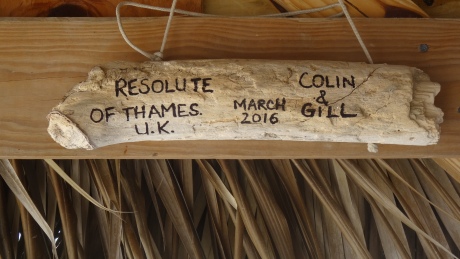
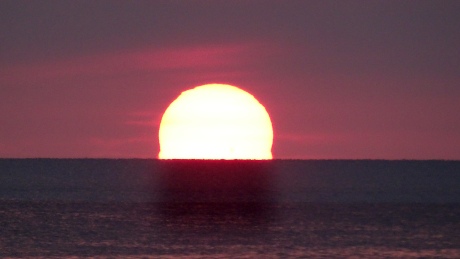
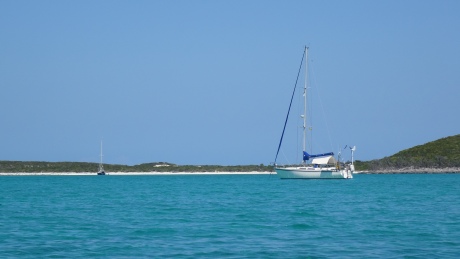
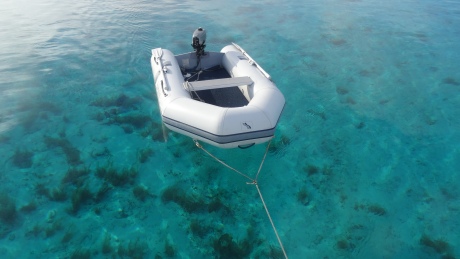
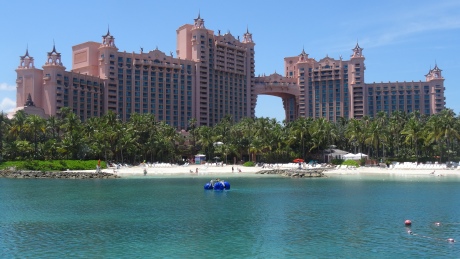
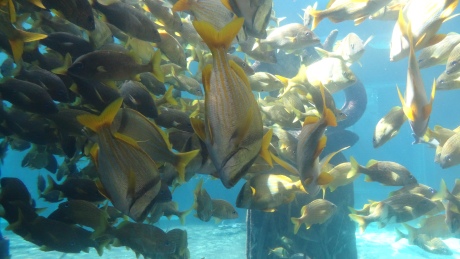
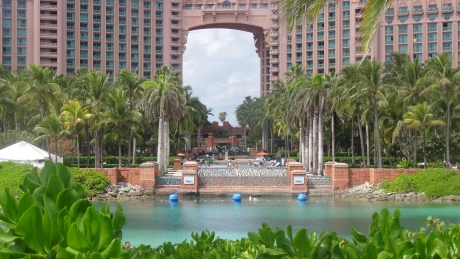
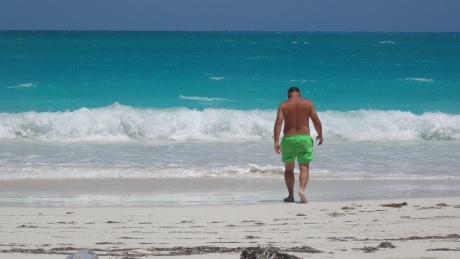
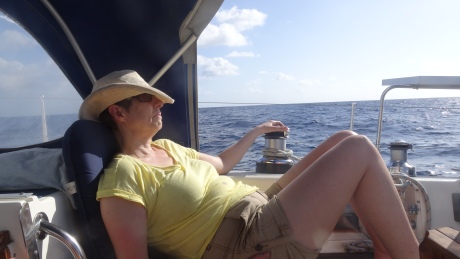
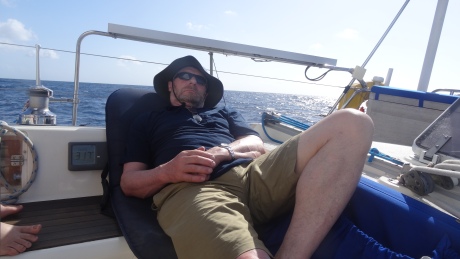
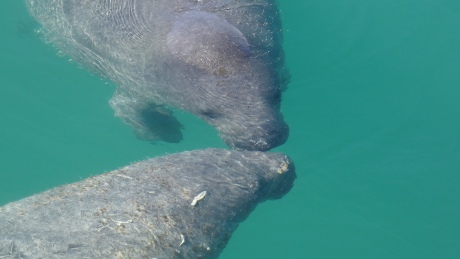 We had never seen these vast bulbous beasts before what a treat! In our hearts we knew we needed to cling on to the sight of the wonderful azure, sparkling seas. Truly the Bahamas of every poster and postcard. Perhaps what epitomised the Bahamas for us on reflection was the way that on all the islands the main road seemed to be called the Queen’s Highway with a nod to the islands British heritage but also acknowledging the huge influence that America has in what is after all their playground.
We had never seen these vast bulbous beasts before what a treat! In our hearts we knew we needed to cling on to the sight of the wonderful azure, sparkling seas. Truly the Bahamas of every poster and postcard. Perhaps what epitomised the Bahamas for us on reflection was the way that on all the islands the main road seemed to be called the Queen’s Highway with a nod to the islands British heritage but also acknowledging the huge influence that America has in what is after all their playground.